


















is always exciting.”ALESSANDRA APOIAN DIRECTOR OF MEETINGS AND SPECIAL EVENTS
While Shutters on the Beach and Hotel Casa del Mar host meetings and events all year long, there is something particularly alluring about summertime social gatherings. The days are longer, and the temperatures are warmer.
Nothing beats a beachside destination for reunions, bar/ bat mitzvahs, weddings, and even corporate retreats. Being near the ocean seems to instantly help everyone relax and get into a festive mood.
My co-workers and I love to plan events from arrival to departure. Bringing a client’s dream event to reality is always exciting. Emotions are high, and expectations are often even higher. We are fully invested in the outcome. Even after 15 years of doing what I do it is still so gratifying to see our clients smiling and having a wonderful time.
No two events are alike and only the best hotels are able to rise to that challenge. We have helped organize everything from a boy band “flash mob” to a menu curated to include a dish from every country where the guest of honor has traveled.
Of course, executing a successful event requires teamwork, and ours is second to none. We are particularly adept at handling last minute requests and the rare inclement weather that may loom during an outdoor celebration. We have excellent resources for tenting our al fresco spaces and we keep ample heaters on site should the ocean air turn cool.
One of the most important parts of planning a big event, and one of my favorites, are the tastings. This time together with the client allows me to learn so much about their likes, dislikes and even their aspirations. It helps me further customize ideas to suit them and create an event that exceeds their expectations.
I like to say we are a family taking care of families, making beautiful memories together along the way.
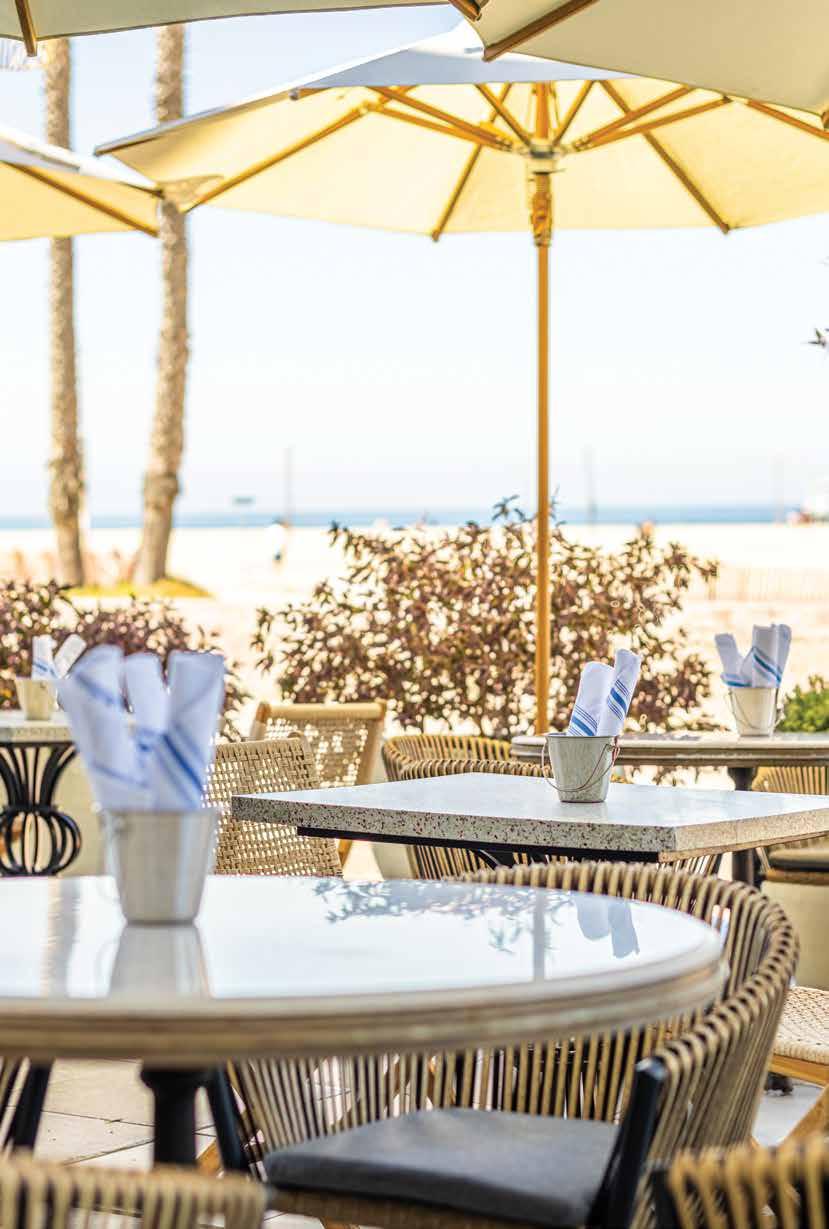

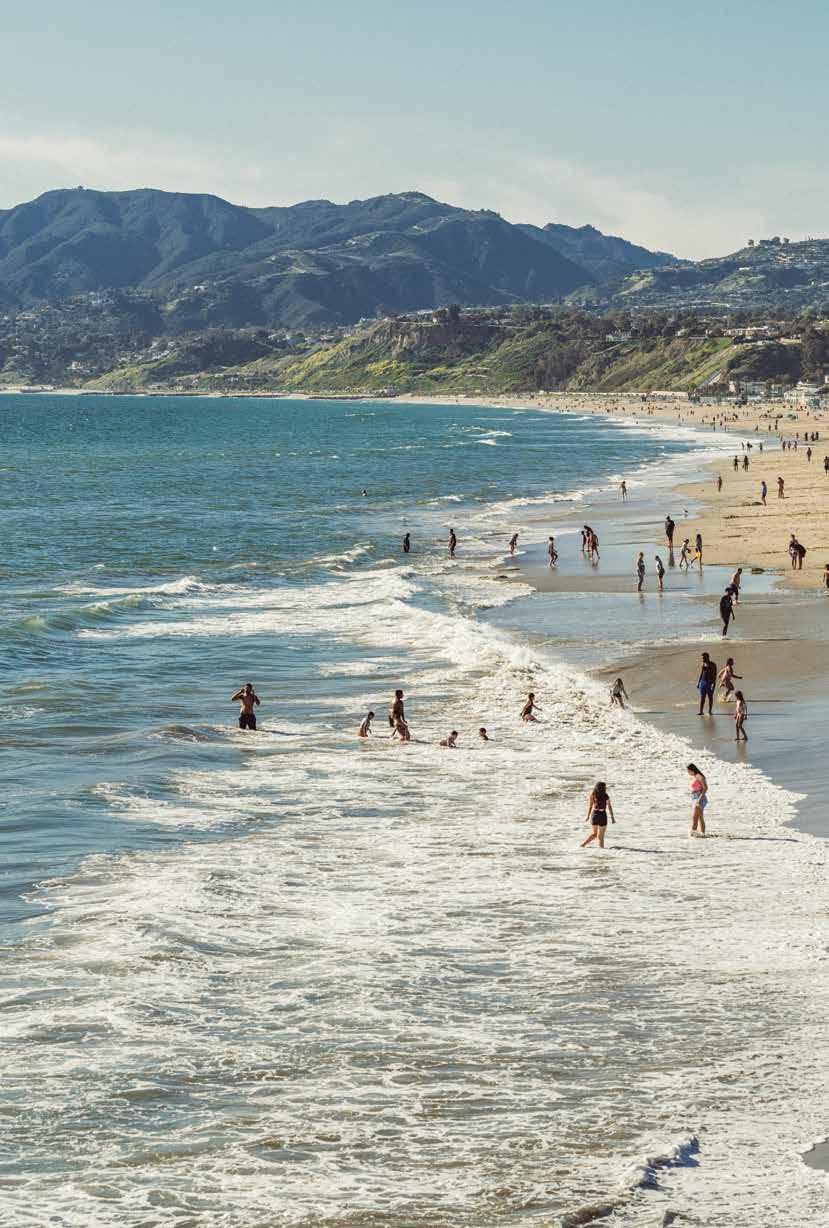

Instagram @hotelcasadelmar @shuttersca
Facebook /CasadelMar /ShuttersontheBeach

CEO & PUBLISHER
Jason Cutinella
GLOBAL EDITORIAL DIRECTOR
Brian McManus
DESIGNER
Nico Enos
CONTRIBUTING EDITOR
Urs Baur
CONTRIBUTING PHOTOGRAPHER
Tim Aukshunas
CREATIVE SERVICES
Gerard Elmore VP FILM OPERATIONS
Joe V. Bock CHIEF RELATIONSHIP OFFICER
Merri Gruesser VP GLOBAL PARTNERSHIPS & DEVELOPMENT
ADVERTISING
Mike Wiley VP SALES mike@nmgnetwork.com
Published by: NMG Network
36 N. Hotel St., Ste. A Honolulu, HI 96817
©2023 by NMG Network, LLC. Contents of Waves are protected by copyright and may not be reproduced without the expressed written consent of the publisher. Waves assumes no liability for products or services advertised herein. Waves is a semiannual lifestyle publication of ETC Hotels.


“
Sam was really the first internationally famous Californiaborn artist”
Artist Sam Francis left an indelible mark on Santa Monica.
On the occasion of the 100th anniversary of the birth of renowned California artist Sam Francis, it’s worth exploring how the environment and cultural scene of the City of Santa Monica influenced the artist’s work and vice versa.
Born Samuel Lewis Francis on June 25th, 1923, in San Mateo, California, Francis would remember frequent visits to Santa Monica, initially with his family and later as a young man. Drawn to the mild climate and vivid light of this coastal city, the artist would maintain several studios in the area over the course of his lifetime.
Some of the key locations included a studio at what would become his main California residence on West Channel Road, previously a garage where Charlie Chaplin had kept his collection of fire engines; a former sailmaker’s loft on the corner of Main Street and Ashland; a large studio at 1664 20th Street; and for a period of time in the 1980s and 1990s, two large industrial spaces on Broadway. Additionally, he shared a 16,000 square foot space in Venice with his artist friends Laddie John Dill, Joe Goode, and Ed Ruscha.
Collaborations and artistic dialogue with his contemporaries were a key element in his process and are currently the focus of a major exhibition at the Los Angeles County Museum of Art (LACMA), Sam Francis and Japan: Emptiness Overflowing.
“This is the first time Francis’ work has been exhibited directly in this context, here in a Los Angeles museum,” says Debra BurchettLere, Executive Director of the Sam Francis Foundation. “Showing the work alongside work of his Japanese contemporaries allows the viewer to draw clear connections and witness the profound ways in which those artists influenced each other. There have been a few exhibitions in that spirit, but never the way it’s been done here, with the artwork displayed side by side and within the same galleries.”
Francis’ life and work are a testament to his commitment to artistic collaborations, creative exchanges, and the cultivation of an intellectually invigorating social circle. His home in Santa Monica was open to friends and fellow artists, who dropped in unannounced constantly, according to

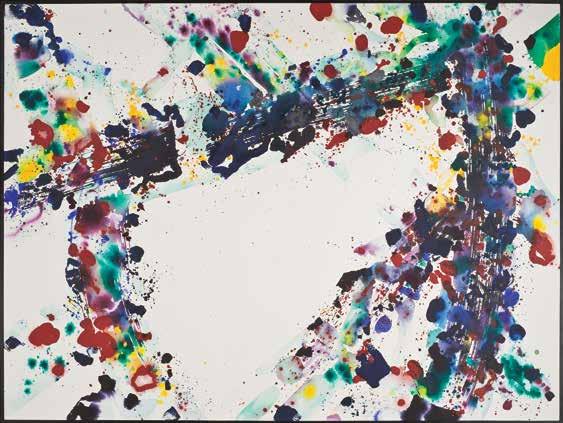

accounts by his surviving family. The West Channel home was also where he painted his last series of paintings, in 1994, just before his death.
“Sam was really the first internationally famous California-born artist,” says Burchett-Lere. He was a truly global artist, and first came to fame in Paris. Besides his home base, he worked and maintained studios in the French capital, New York, Mexico City, and Japan. “He traveled back and forth a lot. He loved Santa Monica. Having the show here in Southern California is meaningful because of a particular cultural affinity we have with the Pacific Rim countries,” she says.
Emptiness Overflowing focuses on his time in Japan and delves into Francis’s affinity for Japanese art and its influence on his oeuvre. Curators Hollis Goodall, Leslie Jones, and Richard Speer have skillfully juxtaposed the artist’s work with historic and contemporary Japanese art, highlighting the visual and philosophical connections between them. The groundbreaking exhibition offers a
window into Francis’s creative world while reminding us of the importance of the cultural milieu in which he thrived.
It is Burchett-Lere’s hope that the show will demonstrate the creative influences and exchanges that are essential in understanding Francis’ work. “I think the exhibit not only showcases the remarkable body of work created by the artist but offers a rare opportunity to explore the symbiotic relationship between Francis and Japanese artists, providing a deeper understanding and context of his work and the cultural exchange that took place during his lifetime,” she says. “And in reverse, I hope it makes people appreciate Asian art in a different way, and be able to see how art rarely exists in a bubble, but that it’s a dynamic process transcending borders and spanning continents.”
The fact that the exhibition coincides with the 100th anniversary of Francis’s birthday is due more to unforeseen delays than intentional planning—a fortuitous byproduct of bigger forces at work. “It’s the icing on the cake,” says Burchett-Lere.




 Sam Francis in his Venice, California studio, 1989. Photo by Brian Forrest.
Sam Francis in his Venice, California studio, 1989. Photo by Brian Forrest.
There are several events and exhibitions planned to commemorate the 100th anniversary of Francis’ birthday—A Century of Sam, as it were—says Sam Francis Foundation Associate Director Beth Ann Whittaker. In May the Bakersfield Museum of Art will host The Circle of Sam, which will highlight artists who worked with Francis in his California studios, predominantly in Santa Monica. There is also on view an homage to Francis at the Jan Museum in Amstelveen, Netherlands, and several institutions around the world will be highlighting his work throughout the year.
In his work, as in Burchett-Lere’s favorite at the LACMA exhibit, I Am An Arbor For Her Thoughts, showgoers will be able to observe “Sam had a very facile hand,” she says. He could paint circles, and draw long straight lines, no rulers. “All very intuitive,” says Burchett-Lere.
They’ll also notice Francis’ incredible intensity of color, the vibrancy—”the cobalt blue, the cadmium red...that’s what he’s been known for.” And his ability to take acrylic paint and make it look like watercolor. “That was quite unique,” she says. “He always had a sense that paint is alive. It quivers.”
Sam Francis and Japan: Emptiness Overflowing, is at LACMA from April 9 to July 16, 2023.
For more info visit samfrancisfoundation.org and lacma.org.
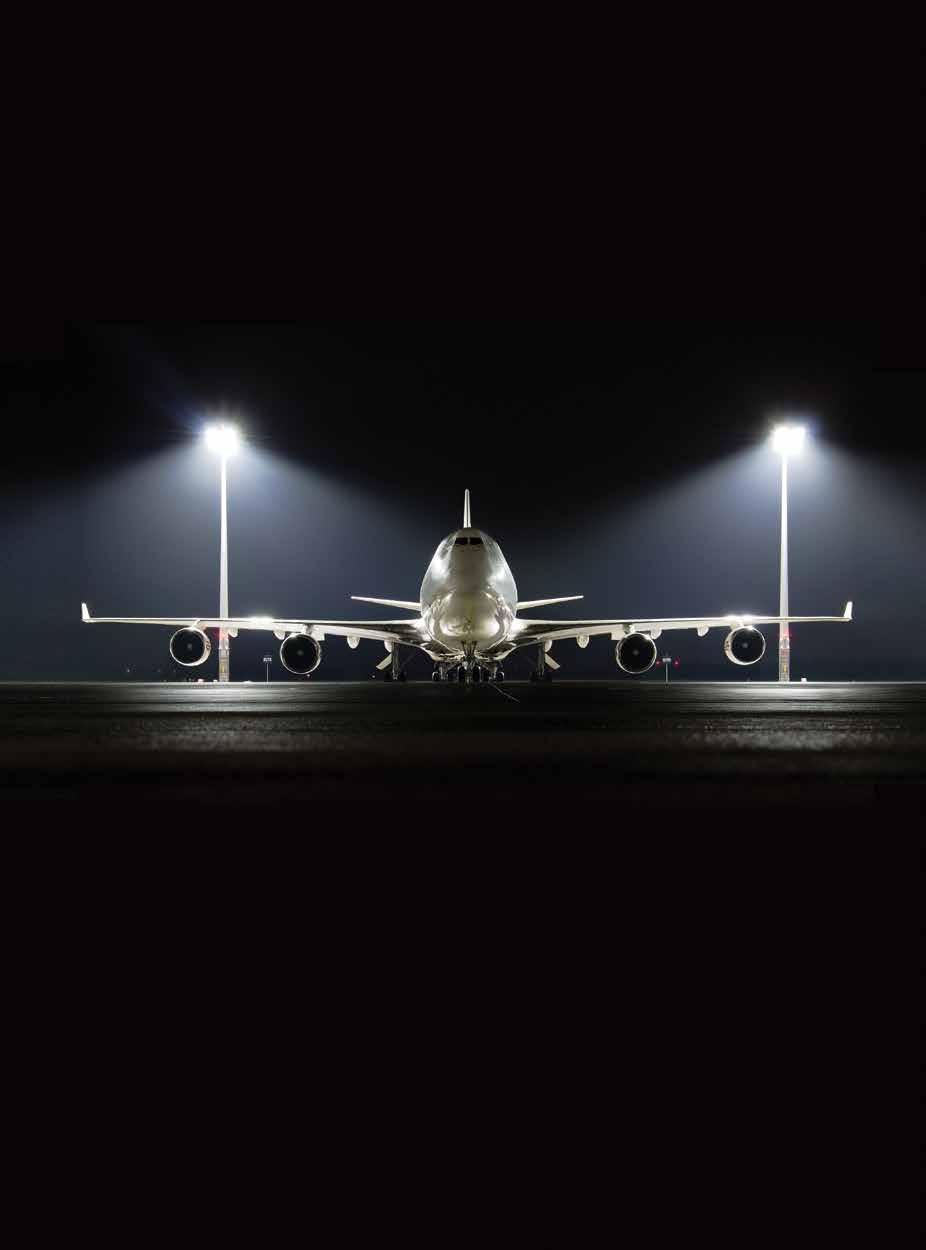
Before he was a baker, Jyan Isaac was passionate about music. He was a jazz drummer. He draws clear parallels between baking and playing. “There is so much creativity with jazz because it’s all improvised,” he says while shaping dough at his nowfamous Jyan Isaac Bread in Santa Monica. “It’s the same with bread. The bread that I make is based on tradition, improvisation, and creativity. Both are practices and take much patience and discipline.
“They are both physical pursuits, very tactile,” he continues. With jazz—as well as baking—mind, memory, and intuition guide the hands’ actions and movements in service of a higher purpose.
In the competitive culinary scene of Los Angeles, Isaac’s bakery has been making quite an impression. It’s where the owner and baker (born Jyan Isaac Horwitz), since the tender age of 22, has been nourishing the local community with his artisanal sourdough loaves, baguettes, bagels, and other baked goods for just over three years.
Isaac’s love affair with baking, famously, started when he first walked into Tartine bakery on a trip to San Francisco and tasted the sourdough bread by famed baker Chad Robertson. He was hooked then and there—experimenting at home initially, and eventually pursuing baking full time. He was lucky to find employment at Gjusta where the Venice native loved to immerse himself in the entirety of the work. He found a great mentor in Travis Lett, the acclaimed chef, who had left shortly before the pandemic forced the operation to close its doors in 2020.
Many may now be familiar with Jyan Isaac’s story of turning his pandemic-related loss of employment from Gjusta into a thriving and growing business one loaf and one half dozen bagels at a time. He began baking sourdough with natural yeast and well-sourced grain in his family’s home kitchen. He started taking photos of his bread and offering them for sale and delivery on Instagram—$10 a loaf, $3 delivery fee.
The steep price didn’t keep people away. He started selling 200 loaves a week,
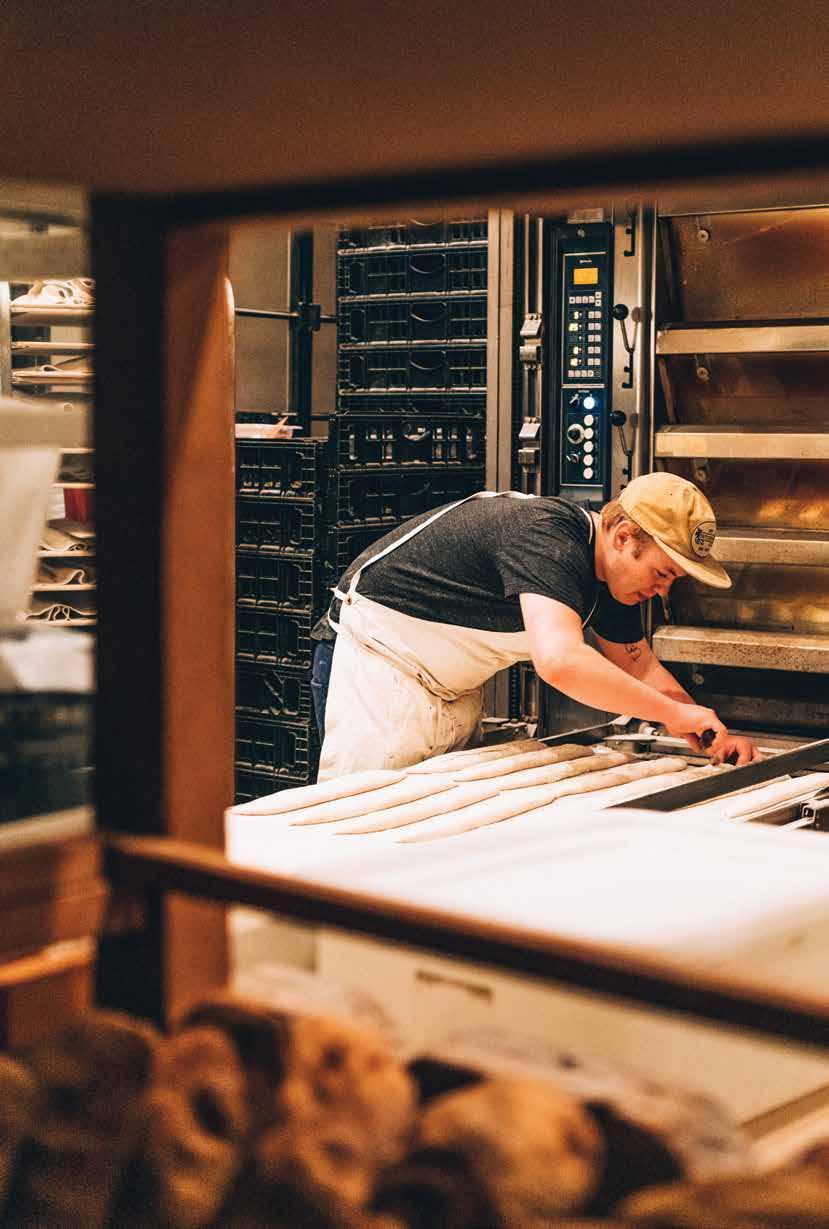

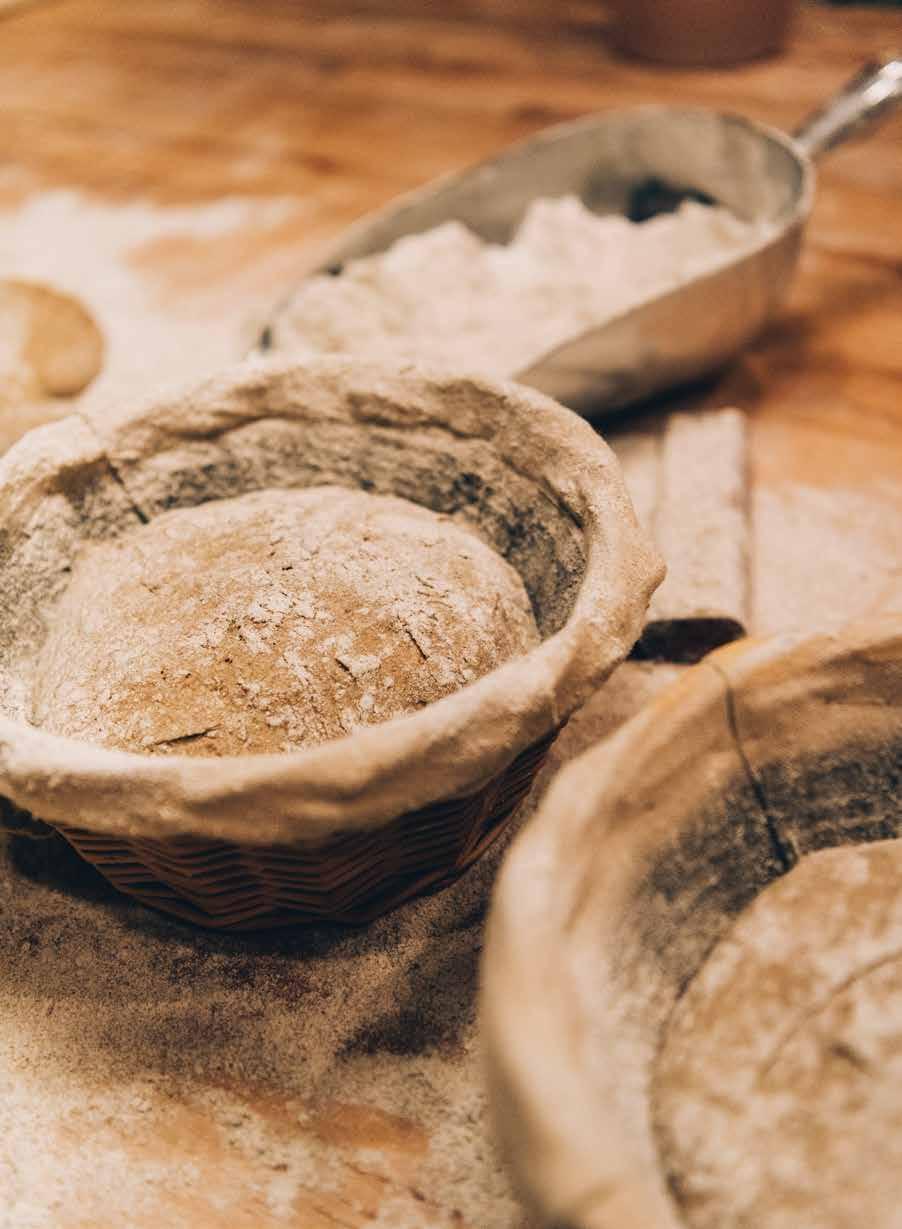
delivering them all around LA from 7 AM to sometimes 6 at night, telling The Los Angeles Times “It was easy at the beginning, because there was no traffic and I could get anywhere in LA in 15 minutes.”
His father Bruce, an entrepreneur, not unbothered by the time and mess his son was making in their home kitchen, suggested Jyan decamp to a nearby pizza restaurant the patriarch had bought recently, itself another pandemic-related business casualty.
That was then.
Now, the bakery’s Instagram-worthy bread has not only attracted a loyal following of locals but has also caught the attention of food enthusiasts, bloggers, and tourists from around the world. Jyan Isaac Bread was named in Food & Wine magazine’s January 2022 feature “The Best Bread in Every State.” But there is more to this bakery than just photogenic loaves. What truly sets Jyan Isaac Bread apart is the passion, hard work, deep knowledge, and perseverance of its eponymous baker.
The place is tiny and seems to exist as an afterthought to the adjacent pizza restaurant his father bought. There is no actual sales floor. Like many recent popular takeout upstarts, its baked goods are handed out through an open door, or across a wooden table to the waiting customers who’d started lining up on the sidewalk outside as soon as they open at 7 AM. It’s before that, in the ungodly hours of the morning where people are only up to make mischief or knead dough, when Isaac is doing the latter and making magic happen.
His team of seven full-time bakers executes a perfectly rehearsed and choreographed routine.
Drawing from packed floor-to-ceiling shelving, large bags of flour, countless stacks of bins on wheels, gigantic dough mixers, all arranged, put to use, cleaned, stacked, greased, and refilled. They feed the dough in various shapes and forms into the giant imported Italian gas deck oven at the center of it all, for golden loaves to emerge hot and perfectly timed. It gives off the vibe of a sacred ritual, all seemingly flowing from the mind of the young bread protégé. No
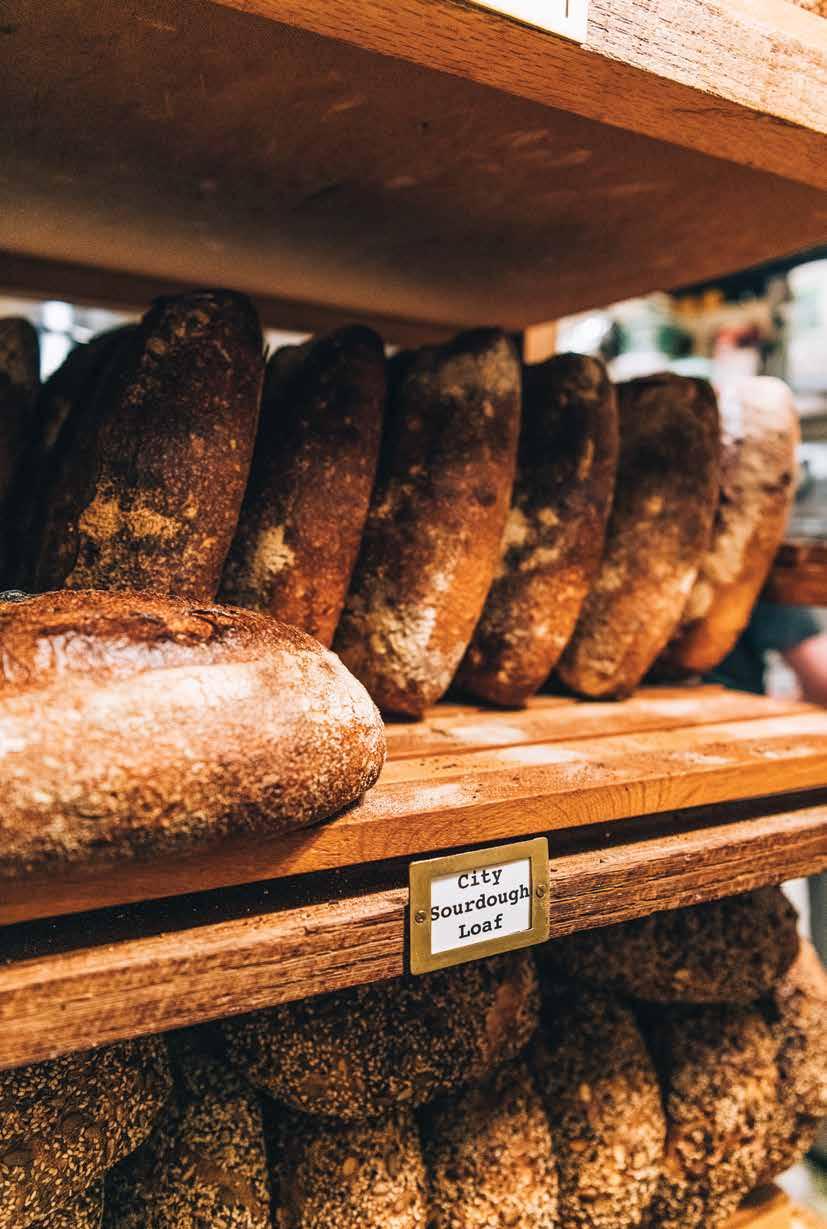
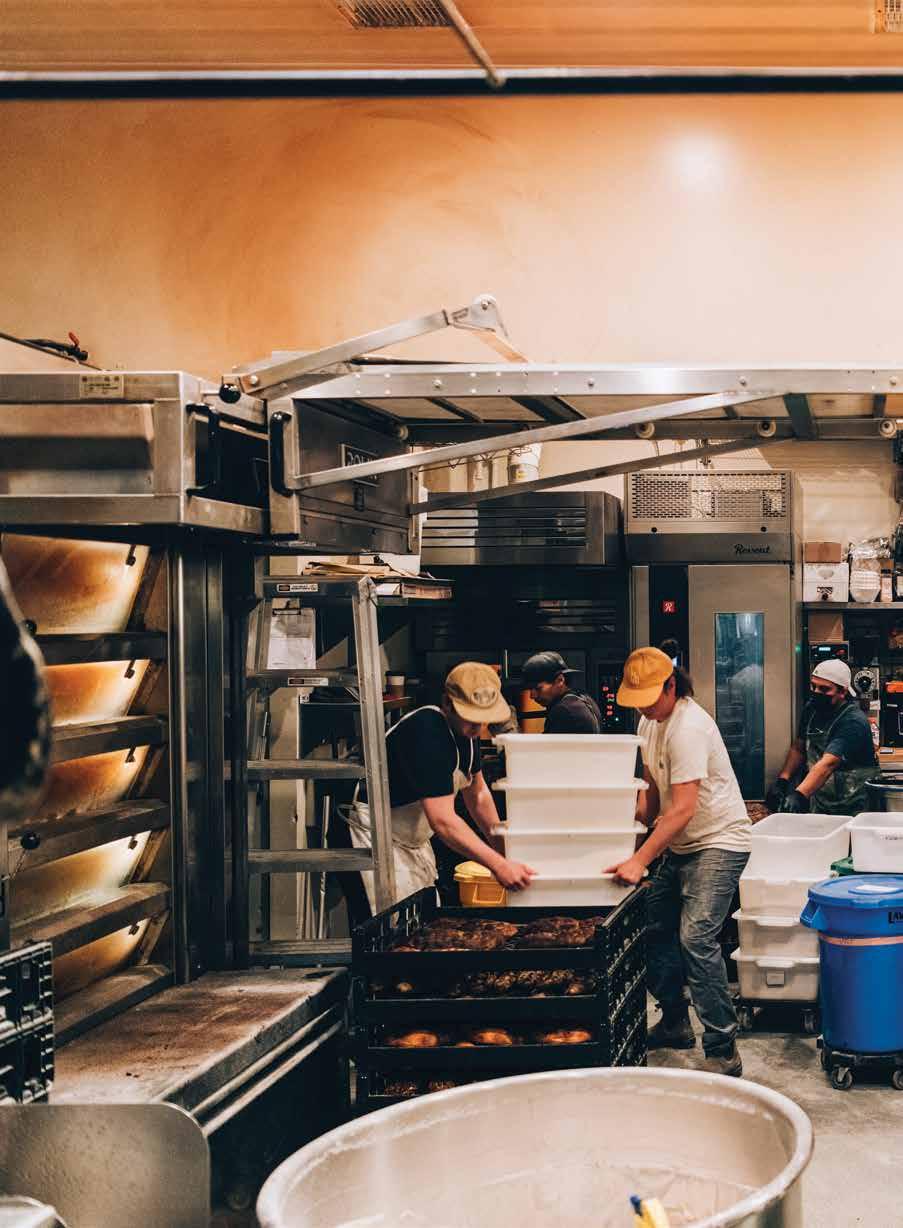



commands shouted. No idle chit-chat. World beats blasting. Everyone is on board.
When not conducting his orchestra in the bakery, Isaac likes spending time with his girlfriend, trying out new restaurants. He feels at home along the southern California coast and loves to fly planes out of Santa Monica airport. His real commitment, he maintains, is to the business and the people he employs. “These guys know everything about me,” he says. “I don’t hold back. They mean everything to me. I’m still amazed sometimes that I get to be surrounded by all these good people and that I can help them make a living, support their families.”
Soon Isaac will open a brand new, larger location in Culver City. With more space and upgraded equipment, he estimates it will quadruple productivity. Still, the team will
take care to uphold the same unwavering commitment to quality.
As one loyal customer told the Times, “The loaves are just so beautiful to look at…it tastes like it’s made with love.”
That won’t change.
By about 8 AM, all the goods are baked. The dough for another batch is ready and formed by noon, then left to do its thing overnight. Before the sun rises the next day, the ritual begins anew.
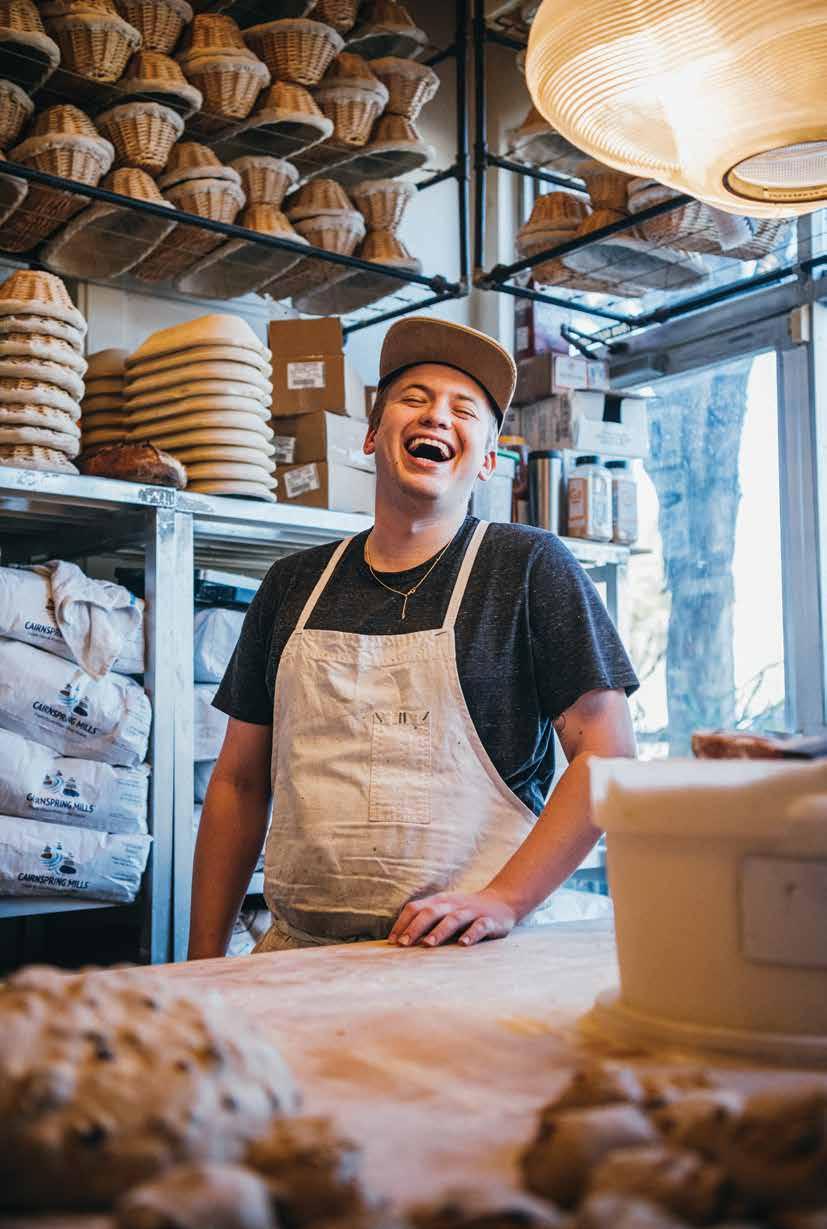

“
It’s a rare occasion to see performers of this caliber on a stage this size.”
Santa Monica College’s performing arts center has been inspiring artists and audiences for 15 years with world-class performances.
Santa Monica’s robust cultural offerings reflect the diversity of its community. Boasting one of the city’s most eclectic and stellar lineups of programming, the multipurpose BroadStage offers theater, dance, opera, jazz, world music, musicals, classical symphony, chamber orchestras, family programming and much more throughout its annual seasons. Since its 2008 opening, the dynamic performing arts complex in central Santa Monica has enlivened the minds and hearts of residents, commuters, students and visitors.
Programs showcase a range of talent from Los Angeles’ entertainment elite to renowned international artists. Located on one of the satellite campuses of Santa Monica College, the BroadStage is the centerpiece of its Performing Arts Center and campus, home to the school’s music program, classrooms and a studentcentered contemporary art gallery.
“One of the best elements of the main BroadStage is that it’s a very intimate space (530 seats) but it has a very large stage [40
feet wide by 38 feet deep] capable of doing absolutely anything,” explains Rob Ballis, BroadStage Artistic and Executive Director. “You can have really beautifully produced and fully realized artworks, dance, theater and music but you get to experience them in a very intimate, immediate way,” he adds. Unlike any other performance space in the country, the BroadStage’s configuration allows eye contact with artists from the boxes to the back row–forging a new kind of artist and audience experience.
“It’s a rare occasion to see performers of this caliber on a stage that size. Oftentimes it inspires those artists to do something really different, to take a risk or to do something really exciting or build a special project,” Ballis continues. The building was initially funded by a 2004 bond measure; the Broad Foundation (established by businessman and entrepreneur Eli Broad along with his wife Edythe) came onboard to endow the new facility with funds, ensuring there would be a non-profit presenting organization, tasked with bringing worldclass work to L.A.’s Westside. Most of
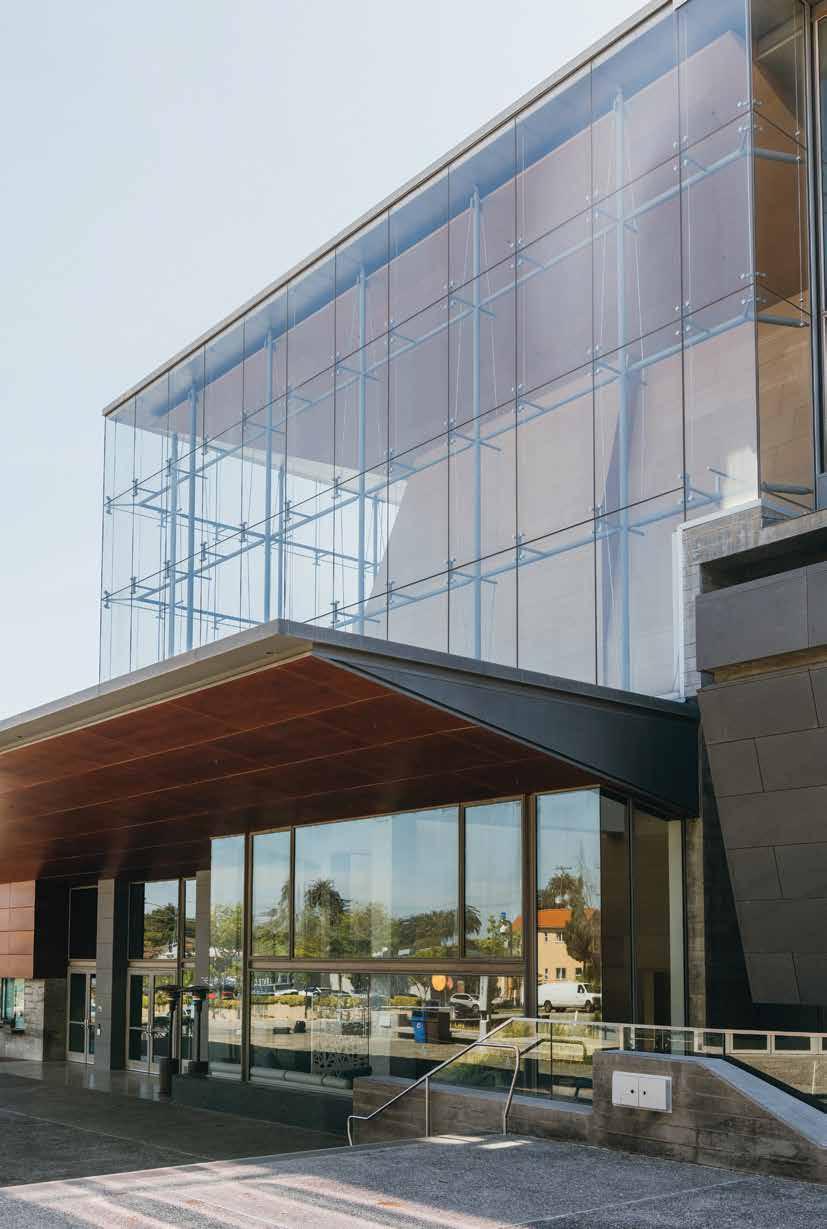
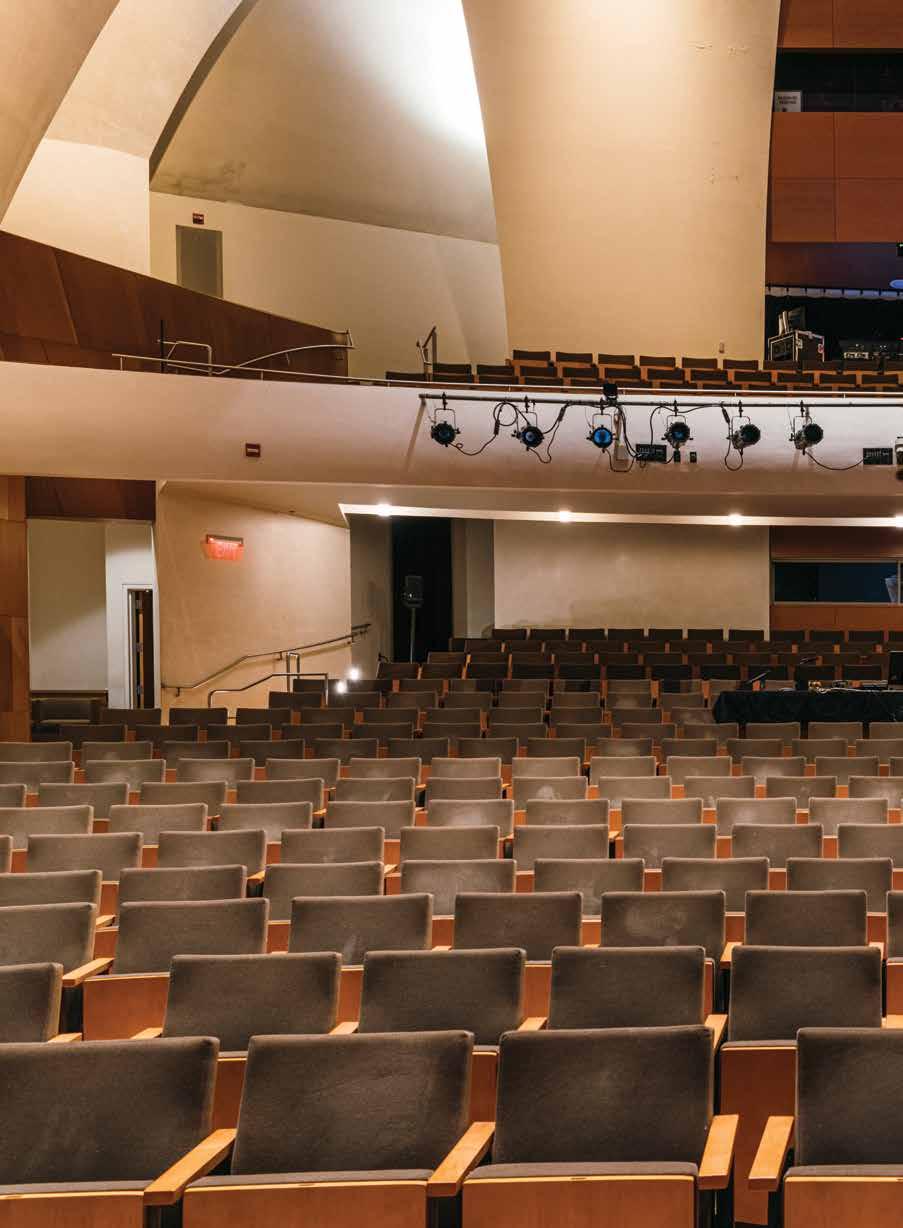

L.A.’s premiere performance venues are downtown and BroadStage fills an enormous gap. “Previously there was no presenting venue of this kind of stature and capacity in Santa Monica,” explains Ballis.
Founding artistic director Dale Franzen led the charge for creating the space; the original vision was a state-of-the-art opera house on a smaller scale, appropriate for younger voices learning the craft. The bespoke design came from Santa Monicabased architect Renzo Zecchetto of Renzo Zecchetto Architects. The striking exterior is a series of complex shapes dominated by a large, cantilevered overhang and a grand glass-encased volume at the top, which glows like a lantern at night. “The architect’s whole concept for the space was to create a beacon that people could see from all around Santa Monica and be drawn into that light,” says Ballis. “It really does beckon you.”
Inside, the BroadStage is notable for its acoustically pristine environment and a comfortable horseshoe plan with customdesigned seating.
Solid Honduran mahogany is found throughout and contributes to the theater’s impressive resonance. “It’s a very live room, which in musical terms means that if you’re an acoustic musician your sound is going to reach the listener quickly, and will come back to you very quickly,” explains
Ballis, who began his career as a classical clarinetist. “You’re in a very reverberant space that allows for an enormous amount of detail,” he adds.
Singers, classical and jazz musicians consider the experience of being in the hall as one of their favorites. “The minute artists walk off that stage, they want to come back,” he contends.
Top tier artists have enhanced the BroadStage since day one. Audiences have seen Mikhail Baryshnikov, actors Helen Hunt, Isabella Rossellini and Hal Holbrook and tenor Placido Domingo—just one of the celebrity opera stars who’ve given recitals in the past. As with other venues, the theater went dark for the 2020 season due to pandemic closures. Reopening meant a return to the BroadStage’s varied mix of highly creative works: actor Alan Cumming (Tony Award winner for “Cabaret”) and Ari Shapiro (host of NPR’s “All Thing Considered”) were seen in a dynamic collaboration performing “Och and Oy! A Considered Cabaret,” a collection of songs and stories. Author and noted humorist Fran Lebowitz, performed “Pretend It’s a City,” a show based on her Netflix documentary series. Influential choreographer Mark Morris presented “The Look of Love,” the Mark Morris Dance Group’s heartfelt homage to the music of Burt Bacharach, with costumes by Isaac Mizrahi.

In early 2023, a multi-year residency and mentorship program with jazz master Stanley Clarke was established. A duo concert with famed Japanese jazz pianist, Hiromi will launch Clarke’s residency. Sought after contemporary choreographer and director Akram Khan will present his company’s show “Jungle Book reimagined,” wherein key characters of Rudyard Kipling classic tale confront climate change. The production combines animation, video and sound design and cutting-edge visual technology to turn the stage into a magical world.
Pushing the bounds of the BroadStage’s stagecraft, Geoff Sobelle will present “FOOD,” his immersive theater work. The interactive production, where audience members sit at a long dinner table, is described as a meditation on the ways and whys of eating. The production also involves four-and-a-half tons of dirt, says Ballis.
Complementing the main stage is an equally, technically equipped ‘blackbox’ theater space for 100 people, named the Edye, for patroness Edythe Broad. The flexible space hosts cabaret, solo performances and lectures in almost any configuration an artist’s imagination allows. One continuing curated series focuses on blues and soul music. Opened in 2019, the complex’s East
Wing sits across a wide plaza and features a flexible indoor/outdoor space for 200 on the ground level. It’s used frequently for jazz shows and boisterous live events.
The comprehensive arts environment is remarkable for a college campus. Students participate in internships and intersect with the space per their select curriculum. “The diversity of programming is matched by the level of welcome we’re offering to an extraordinary range of interests and different kinds of people,” says Ballis of the BroadStage’s commitment to an authentic welcoming environment.
“You’re going to have a great time coming to the venue, whatever artist you see there, you’ll be assured they will be fantastic,” promises Ballis. “The reasons to come are many and the reasons to return are many more.”
For tickets and current programs: BroadStage at The Eli and Edythe Broad Stage, 1310 11th St., Santa Monica CA 90401, 310-434-3200, Broadstage.org

There are certain images conjured when people think of Santa Monica: the sun, the sand, the surf, the mountains, the pier. Certain sensations, too, be it the cool breeze gliding off the Pacific or the mouth-watering aromas of the food vendors lining its historic beach.
The city’s rich and colorful history over the years is on full display—to the tune of one million items—at the Santa Monica History Museum. Their work “aims to preserve and share the history and culture of Santa Monica for generations to come, and we promise to be a place that tells the story of everyone in our community,” says its Executive Director, Rob Schwenker.
“Being surrounded by Los Angeles on all sides with permeable borders of course means that we are inextricably connected to the history of the second largest city in the country,” Schwenker continues. “However, Santa Monica has always felt like a smaller community with its own sense of civic pride and an independent spirit that has led the city to be a place where innovation and creativity thrive. As a beach enclave it has attracted many people throughout its
history—artists, writers, celebrities, and tourists—but it is also home to people’s everyday lives, and we try to represent the diversity of this history in our exhibitions.”
The Museum’s latest does just that. Coming Out West: LGBTQ+ Elders Share Their Stories, which runs from June to December of this year, features eight longtime residents with connections to the Santa Monica Bay Area sharing their life stories in video oral histories.
The Santa Monica History Museum also happens to have one of the most extensive image archives in Southern California, with over 600,000 rare photographs of the city’s development, its popular beaches and piers, and the people who call it home. Here, Waves plums the depths of their impressive collection to examine Santa Monica’s unparalleled history. In addition, we’ll take a look at modern day Santa Monica through the lens of famed Southern California photographer Tim Aukshunas.
For more visit santamonicahistorymuseum.org
in 1987.

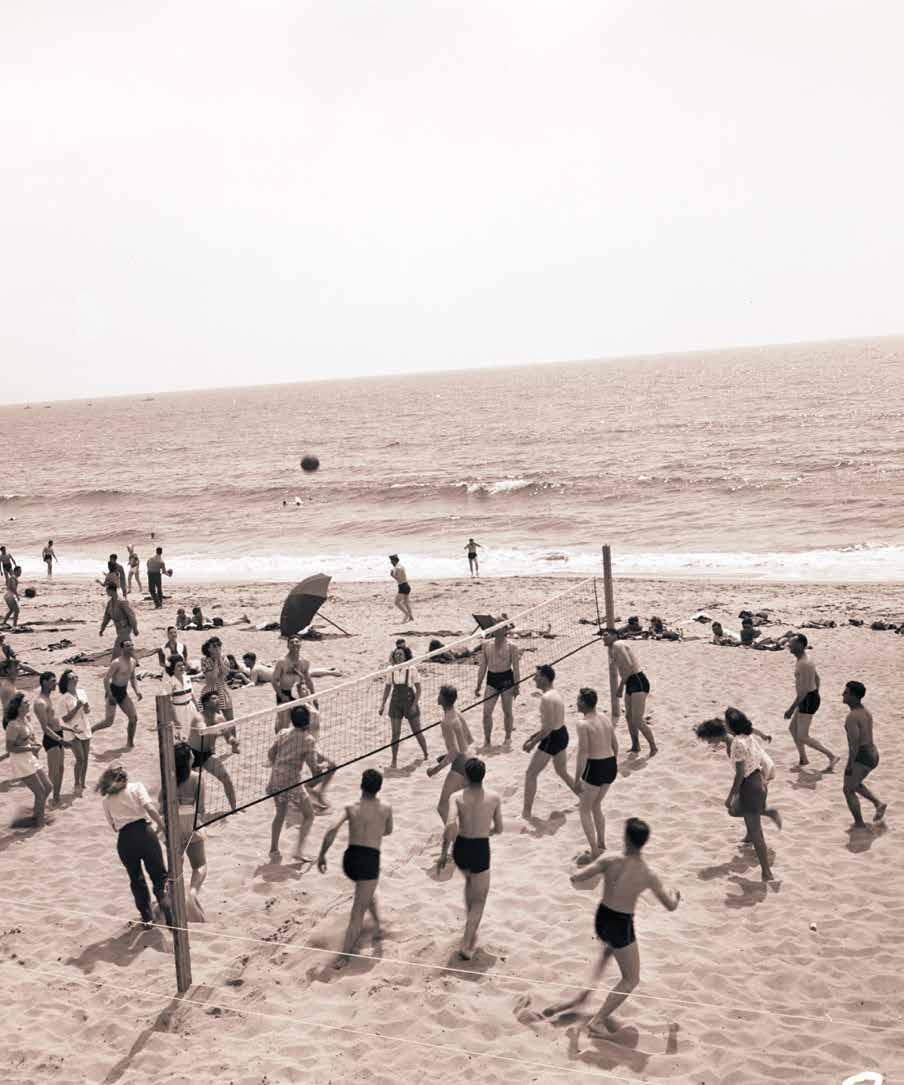 A group of soldiers from Camp Cooke, an army camp located between Lompoc and Santa Maria, play volleyball on the beach while visiting the U.S. Army Recreational Camp in Santa Monica.
A group of soldiers from Camp Cooke, an army camp located between Lompoc and Santa Maria, play volleyball on the beach while visiting the U.S. Army Recreational Camp in Santa Monica.
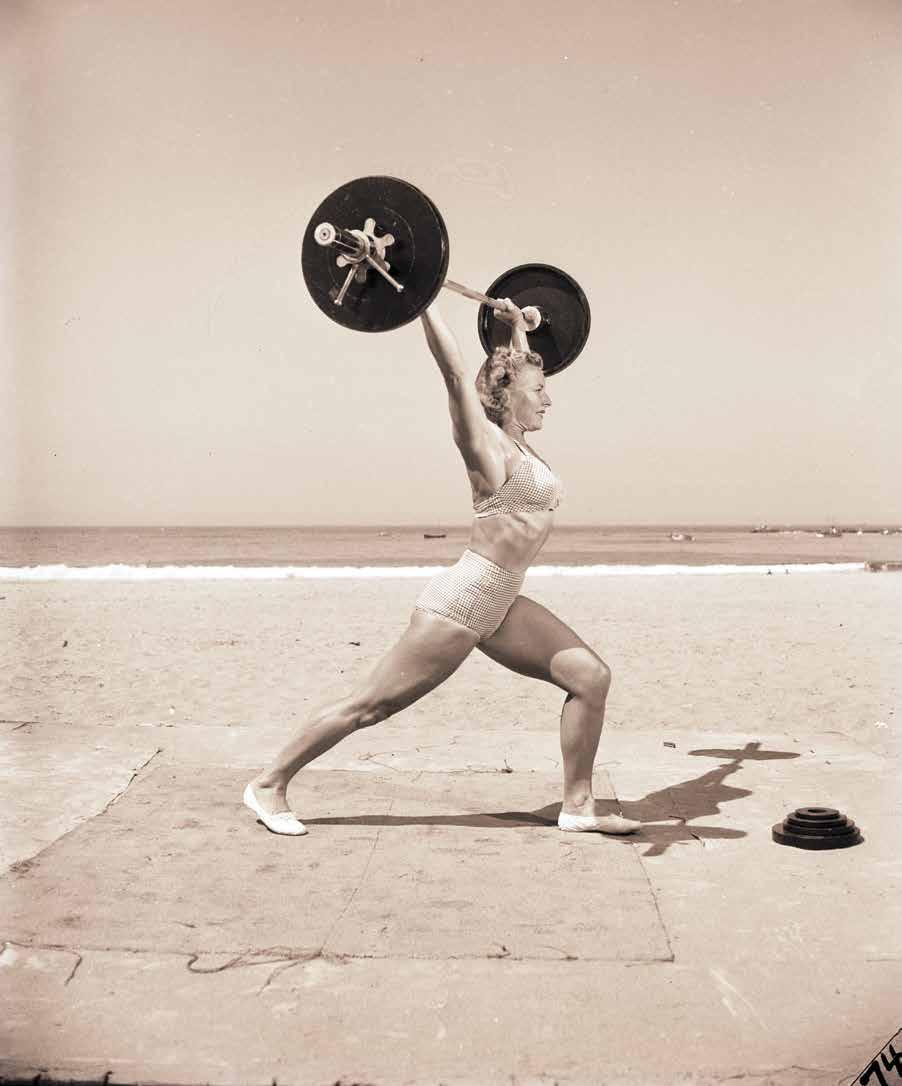 Muscle Beach Gymnast Abbye Stockton, 1944
Muscle Beach Gymnast Abbye Stockton, 1944
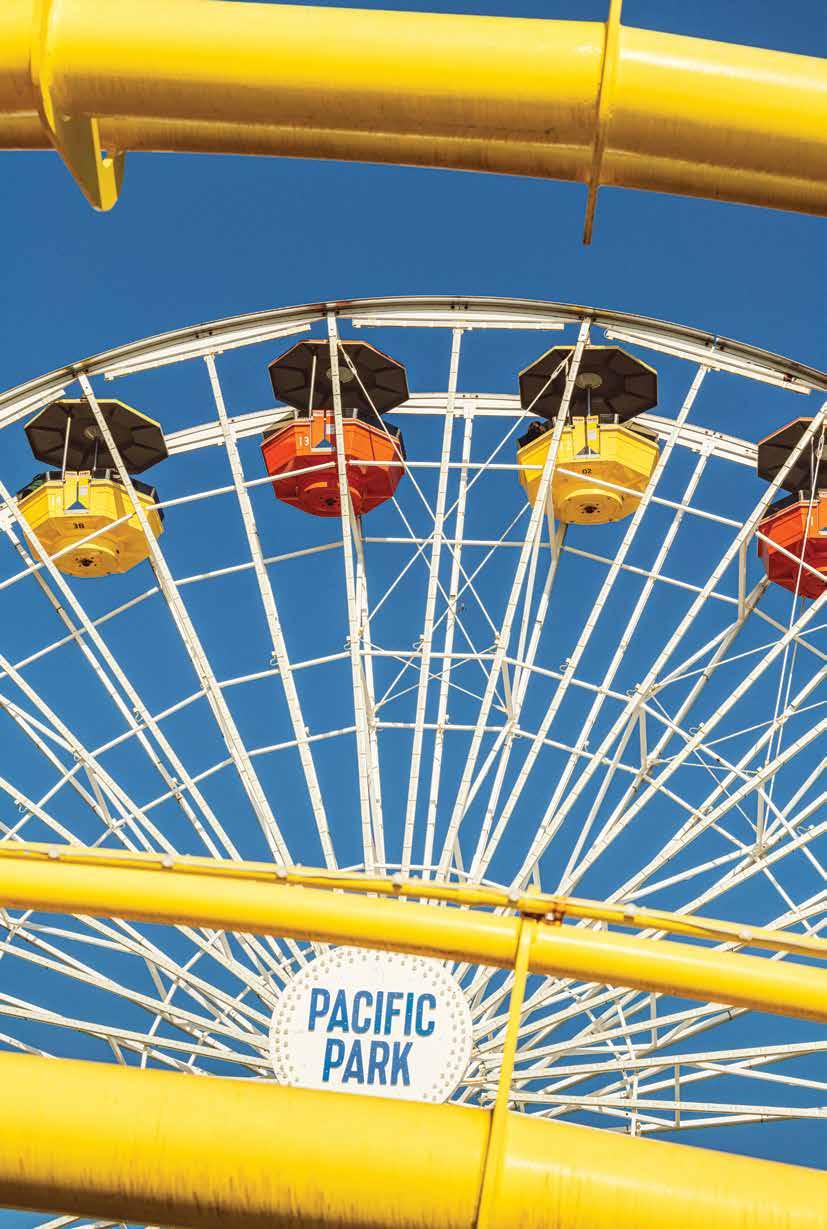
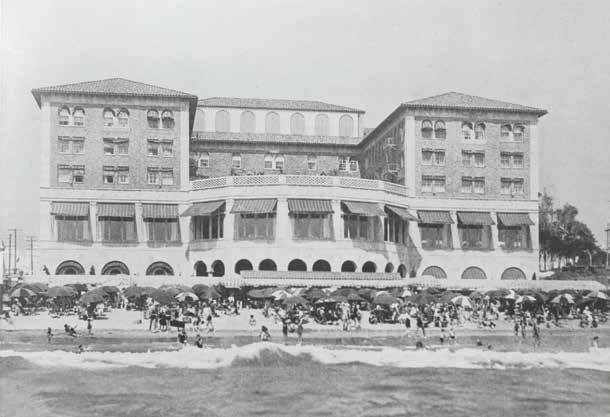
 Above: Beachgoers at Club Casa del Mar, undated.
Men with surf boards on Santa Monica Beach in front of the Casa del Mar, a well known beach club amongst leading business executives and Hollywood celebrities. Undated.
Above: Beachgoers at Club Casa del Mar, undated.
Men with surf boards on Santa Monica Beach in front of the Casa del Mar, a well known beach club amongst leading business executives and Hollywood celebrities. Undated.
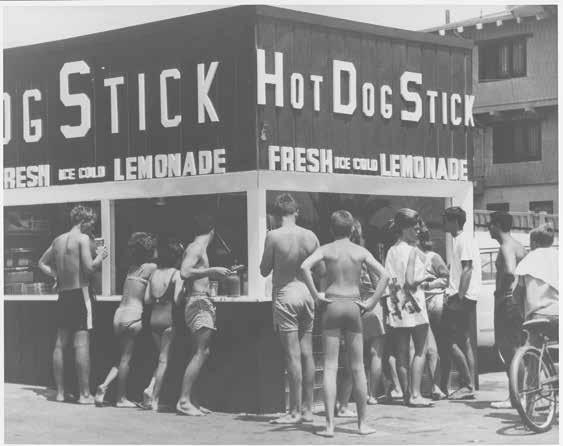
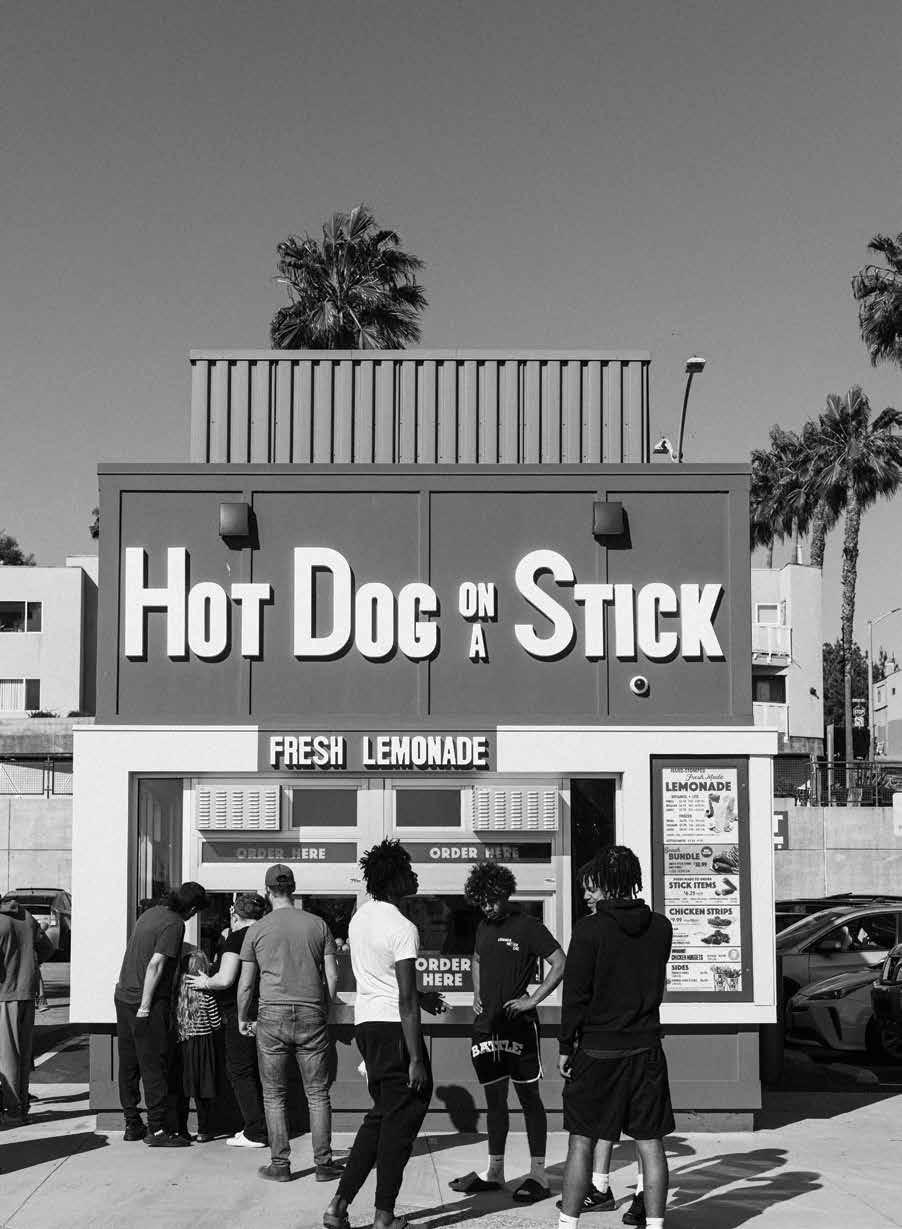

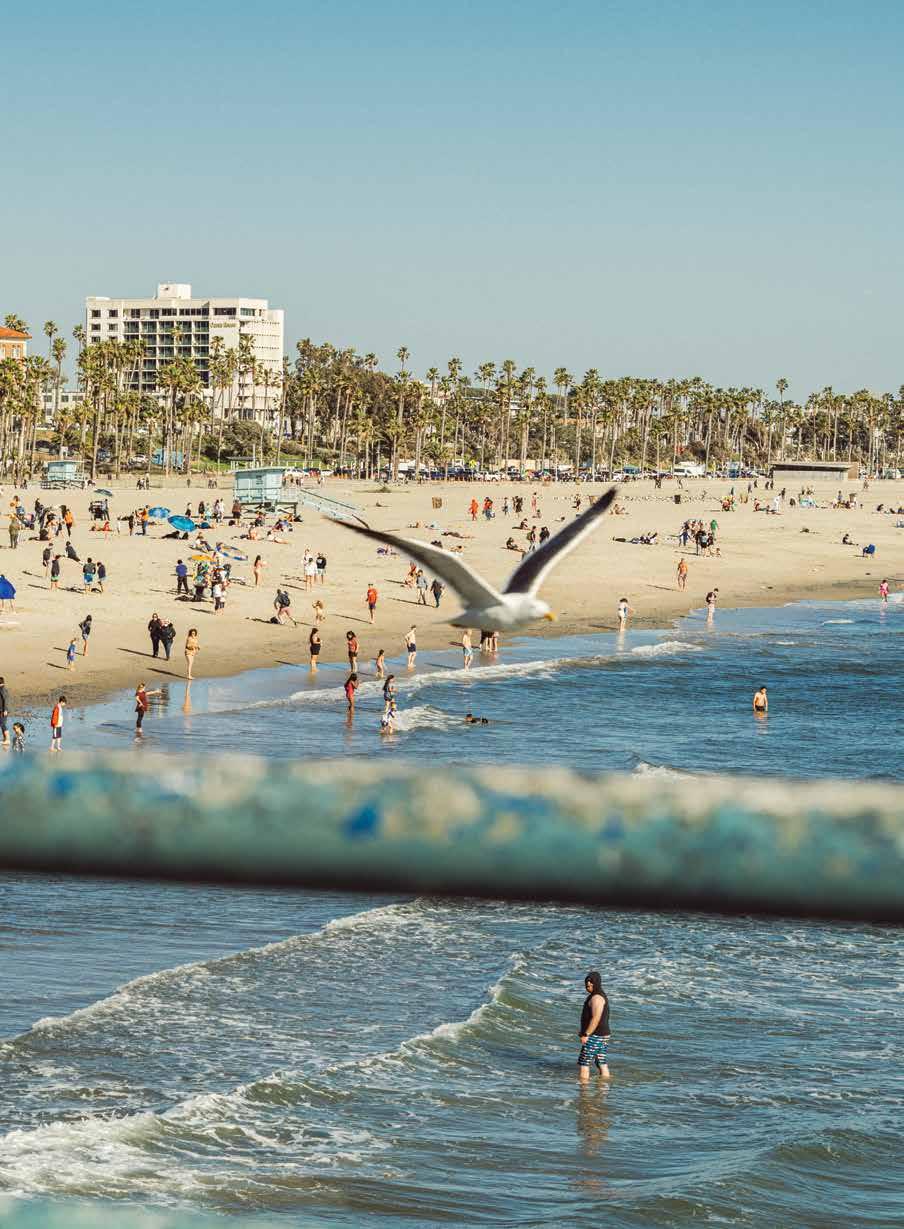




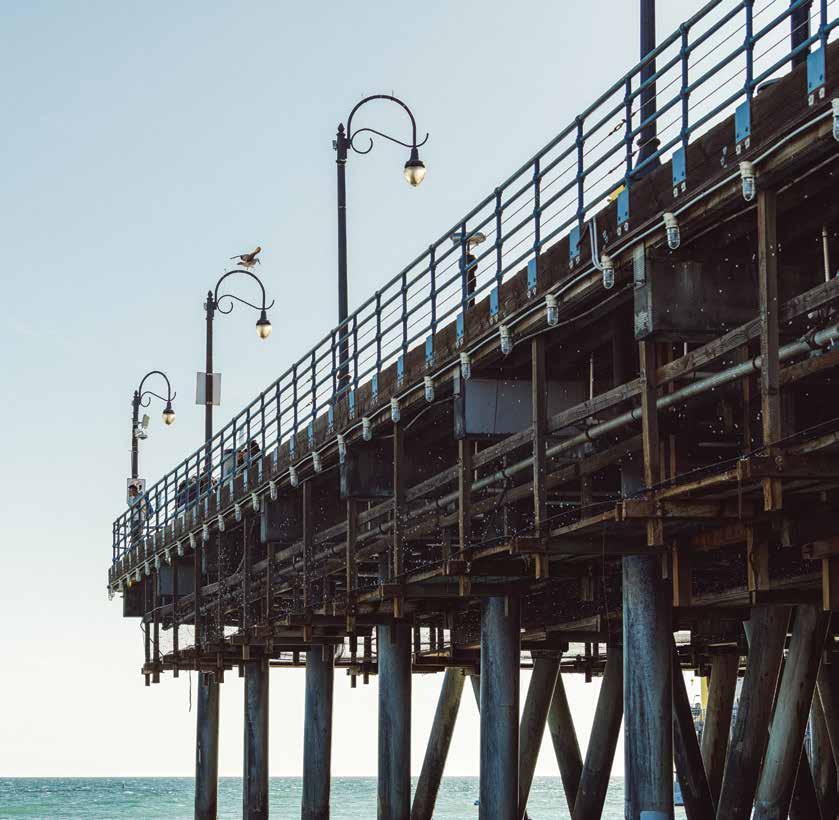 Previous page: The construction of the Santa Monica Pier, 1890. Photo courtesy University of Southern California Libraries and California Historical Society
View of the concrete piles (columns) under the Santa Monica pier, 1915. Photo courtesy University of Southern California Libraries and California Historical Society
An aerial view of Santa Monica Municipal Pier, showing Sinbad’s and Moby’s Dock restaurants. Santa Monica Sport Fishing is at the end of the pier. 1972.
This page: The Pier in 2023.
Previous page: The construction of the Santa Monica Pier, 1890. Photo courtesy University of Southern California Libraries and California Historical Society
View of the concrete piles (columns) under the Santa Monica pier, 1915. Photo courtesy University of Southern California Libraries and California Historical Society
An aerial view of Santa Monica Municipal Pier, showing Sinbad’s and Moby’s Dock restaurants. Santa Monica Sport Fishing is at the end of the pier. 1972.
This page: The Pier in 2023.
Resting directly on the sand in Santa Monica, Shutters on the Beach and Hotel Casa del Mar are home to six memorable culinary destinations. Endless ocean views complemented by seasonal menus, craft cocktails, and live music nightly.

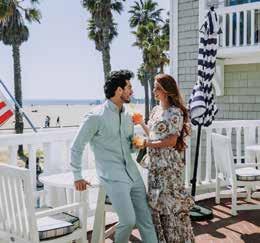
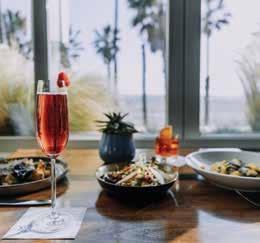

A luxuriant day-to-night space serving morning coffee, light meals, afternoon tea, or a night cap. Linger by the fireplace or enjoy breathtaking Santa Monica sunsets from the best seat in town.
One of Southern California’s premier beachfront dining destinations. Experience Coastal California Cuisine at its finest when you dine under the stars in the 1 Pico Courtyard.
Relax and enjoy California inspired dishes from Chef Vittorio Lucariello at Coast, a family friendly, casual environment to enjoy great food and picturesque views of the Pacific.




Get your ciao on at this charming trattoria celebrating Italian inspired coastal cuisine. Enjoy a chilled sparkling Prosecco and signature dishes from Chef Gemma Gray.
The hottest luxe meeting space in Silicon Beach serving after-work cocktails and a selection of Chef’s canapés. Reserve a cabana for a day of work or a creative retreat.

Taking a front row beachside seat at the foot of the iconic Hotel Casa del Mar is our new al fresco bistro, Patio del Mar. Steps from the strand, it is the perfect place for a summer lunch or sunset dinner with friends.
Its closure imminent, we remember the innovation and cultural relevance of (and the squabbles over) the forward-thinking Santa Monica Airport.
It’s old now, but still innovating. We’re talking, of course, about the Santa Monica Airport (SMO). One of the nation’s continuously-running airfields, it, at one time, was also the busiest single runway airport in the world. Its life has been long, and not without controversy. In 2028 it’s set to end.
In the city’s statement about the closure, released in January of this year, Mayor Gleam Davis said, “This is the beginning of a community process to reimagine the Airport site, which accounts for an unprecedented 4.3% of the City’s land. We know this is an asset Santa Monicans care about and we want to work together to set goals and priorities to meet diverse community needs for the next several generations.”
The airport’s 227 acres will be repurposed for the development of parks, public open spaces, and public recreational facilities, and the maintenance and replacement of existing cultural, arts, and educational use on the land. New real estate development is prohibited on the land.
No doubt a noble end for a place with such a towering history.
Santa Monica Airport just celebrated its 100th birthday, having opened for its first flight on April 15, 1923. It was then known as Clover Field, named after famous World War I aviator 2nd lieutenant Greayer Clover, a fact sometimes forgotten to history in the rightful confusion over the name
of a nearby thoroughfare, Cloverfield Boulevard, which suggests a field of green clover rather than the fallen soldier.
Over its storied past SMO has hosted famous pilots like Amelia Earhart and business magnate Howard Hughes, and welcomed many a president to its runway and helipad—Reagan, Trump, Biden. In the ‘40s, with the help of the war effort and Donald Douglas and his Douglas Aviation company, it employed 44,000 workers. Some years later, in ‘58, when Douglas wanted to lengthen the airport’s runway and use it as the manufacture and test site of the DC-8, he was rebuffed by city officials who feared angry constituents. So he picked up his jobs and propellers and went to Long Beach Airport.
That early squabble laid bare some of the earliest clues Santa Monica Airport’s days would likely be numbered. Namely, that the city’s residents, some of whom lived close by, would lobby long and hard for restrictions that would hobble air traffic to the point of their being no point or for SMO’s out and out closure. It’s a fight that, by the time it ends, will have lasted some five decades.
Over that span, its detractors have had the runway shortened to alleviate some concerns over noise pollution, organized groups and committees—Citizens Against Santa Monica Airport Traffic (CASMAT) and Sunset Park Anti-Airport, Inc., (SPAA)— assembled protests, and put up yard signs




to persuade neighbors and passersby that SMO should go. None of their efforts, though, could match a 2009 UCLA study of the downwind air quality near the airport, which turned up elevated ultra fine pollution particles that threatened the health of lungs of neighboring communities. Once that began making headlines, outcry grew.
In a poll, some 80% of respondents favored closure.
But that paints a distorted picture. Naturally those living directly next to the airport weren’t exactly keen on its continuing, and were more vocal about its being shuttered. Truth is, most people likely seldom give the Santa Monica Airport a thought.
In fact, they may even have warm feelings about it.
They know it—and will remember it—for things other than airplanes buzzing by the air traffic control tower and hyperlocal fights.
For the Barker Hangar, for instance, which has become one of the premier and most unique venues in Los Angeles. At 35,000 square feet, it’s certainly the city’s most versatile, hosting everything from boxing matches, movies, concerts, wine and food festivals and trade shows, and the Nickelodeon Kids Choice Awards. The hangar has also become a hot spot for LA Fashion week, whose runway shows by the runway are a perfect fit.
Most famously, it has become home to the Frieze Art Fair, whose Los Angeles iteration began in 2019 on the Paramount Studios lot before relocating to SMO this year. The Frieze is a giant and renowned international contemporary art fair which takes place in London, New York, Seoul and Los Angeles…at the Santa Monica Airport. Each year some 60,000 attendees vie to purchase works by some of the most esteemed and in-demand artists from past and present. It garners much coverage from the art press, and in LA in particular, features frequent celebrity sightings.
Attendees this year alone included supermodel Heidi Klum, singer Lionel Richie, tennis great John McEnroe, and Curb Your Enthusiasm’s Larry David. [Deep breath.] Margot Robbie, Elijah Wood, Christoph Waltz, Gwyneth Paltrow, Jared Leto, Catherine Keener, and Owen Wilson. In short, TMZ may want to train their prying lens away from the arrivals and departures area of LAX’s terminals and toward the galleries of SMO.
Beyond its newfound cultural relevance, the Santa Monica Airport has also shown much promise and dedication to the future of aviation, particularly all electric aircraft. Though passengers likely won’t fly on zero emissions aircraft until later this year, and battery-powered large passenger jets aren’t expected for another decade, Santa Monica Airport was thinking about and testing demos of electric aircraft as far back as five years ago. It was then that its Airport Association welcomed George Bye, CEO of Bye Aerospace, a pioneer in allelectric flight.
“General aviation is ready for a much-needed boost, and the benefits of electric flight, including lower noise and emissions, are particularly important to airports like Santa Monica Airport,” Bye said in his keynote speech at an event, held in 2018, “Electric Aircraft Morning,” hosted by the Santa Monica Airport Association and Museum of Flying.
The airport’s website continues to post news about the ongoing innovations made in the electric aircraft space and strides companies like Israel’s Eviation are making with its sleek Alice model, and US-based company Ampaire’s continued success with hybridelectric Cessnas. Typical headlines on this corner of their site read “THE WORLD’S LARGEST ALL-ELECTRIC AIRCRAFT MADE ITS FIRST SUCCESSFUL FLIGHT!” and “THE FUTURE IS ALREADY HERE!” (All caps and exclamation marks are theirs.)
Such enthusiastic declarations hint that, though the end is near, a less noisy, less polluted future might have been possible.
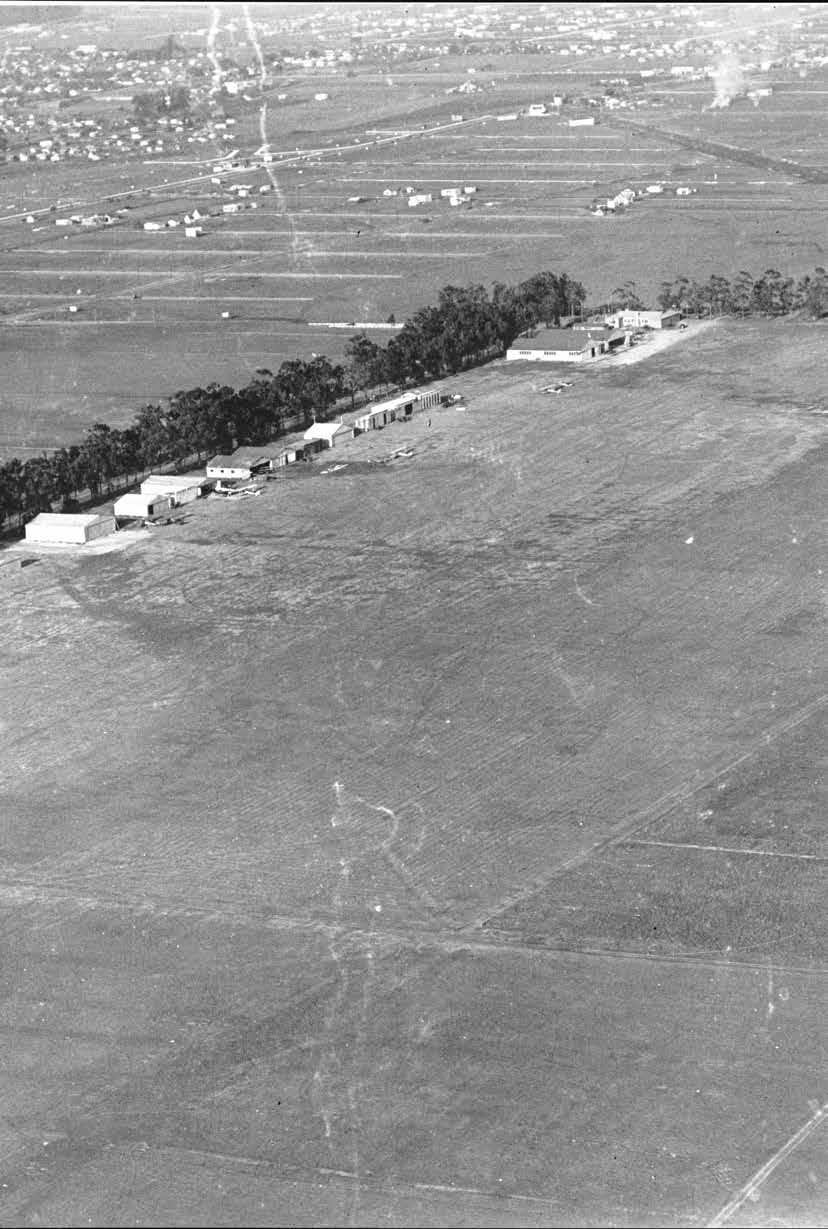

“
Getting six runners through the desert is no joke.”
What do you get running an unsanctioned foot race from the Santa Monica Pier to the Welcome to Las Vegas sign? Gratitude, mostly.
The Speed Project is an ultramarathon race that takes runners on a grueling 340-mile journey from the Santa Monica Pier in California to the Welcome to Las Vegas sign in Nevada—a route that snakes through Hollywood and the Antelope Valley, past a massive airplane graveyard at the edge of the Mojave Desert, along the edge of Death Valley National Park. and many other touchstones. The race attracts runners from all over the world, who compete in relay teams or as solo runners.
First organized in 2014 by Blue Benadum, a filmmaker and avid runner, the event quickly gained popularity among the ultrarunning community, and in just a few years, it has become one of the most challenging and prestigious ultramarathons in the world.
But there’s a catch.
The Speed Project is an unsanctioned race, meaning it is not regulated or recognized by any official governing body. The race is organized entirely by volunteers and relies on the participants to ensure their own safety and wellbeing throughout.
The rules of the race are relatively simple: runners must start at the Santa Monica Pier and finish at the Welcome to Las Vegas sign, and they must travel on foot the entire distance between the two points. No rest stops or fancy hotels. The route is left up to the individual teams and runners, who must navigate through a variety of terrains, including deserts, mountains, and urban environments. The only rule: No highways.
The prizes for the Speed Project are modest compared to other major ultras, with the winning team receiving a trophy and bragging rights. The real reward for many participants, as we found out, is the sense of accomplishment that comes from completing such a grueling and challenging race.
This year some 75 teams participated in the Speed Project. One of them, Roark Run Amok, ran for Roark, a running and apparel brand out of Orange County. The team placed fourth overall. Comprised of four men, and two women to honor the original team that ran the route nearly a decade ago), each team member ran around 50 miles over the course of 34 hours.


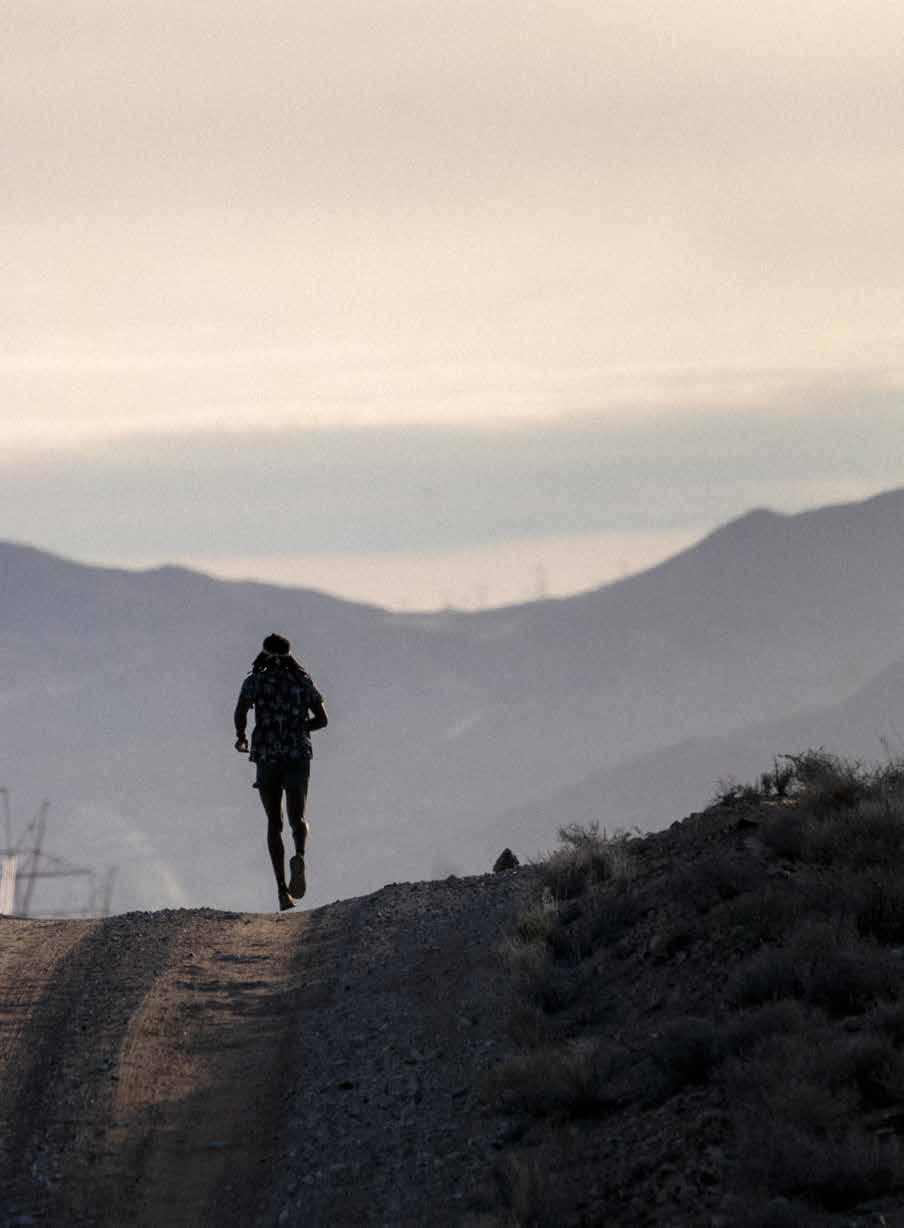
Waves caught up with Nash Mader, Team Captain and Roark Run Amok Category Specialist to talk about the experience.
First question: Why? Why do this?
The impact the Speed Project has on the runners and crew is transformative. It’s a team effort (solo runners included). It’s selfless. It creates eternal relationships and breeds love and kinship in the community of running. I wouldn’t say that we do it for the glory, or even the story, as it is such a unique and personal experience. We do it for the people, the relationships, and the personal growth that we find deep in the desert.
How long has Roark been a participant in the Speed Project, nd what inspired you to take on this challenge?
This was Roark Run Amok’s second year participating in the race. Initially, the race simply intrigued us. What was all of the hype about? We would hear our friends talk about the race and their experiences like it was some kind of spiritual enlightenment, so we had to go get a taste of it ourselves. The connection that we felt with each other and the running community turned out to be just that. It is addicting. We didn’t
even ask each other if we wanted to do it again. We all just knew.
What kind of prep is done to train for a race like this?
Training looks different for each athlete. Due to the nature of the race (high mileage, but really fast) you see a wide array of types of runners. All the way from speedy track athletes, to elite ultrarunners (those who specialize in distances greater than a marathon). Because of this, the approaches to training typically differ. Roark’s team consisted primarily of ultrarunners, so they all maintain a rather large mileage base year round. They are averaging 50-plus miles a week, so their job before this race was to hone in their muscle groups for speed. Mile repeats and tempo runs were on tap weekly so that they were able to average 6:30 miles all the way to Vegas.
Beyond this, some of the most intensive prep came in the manner of route finding and logistics. Getting six runners through the desert is no joke. Days on end were spent poring over maps and aerial views of the desert, prepping meals, and prerunning sections of the course.
MEET ROARK RUN AMOK
What does it take to run on foot from the Santa Monica
to the Welcome to Las
sign that greets visitors to Sin City’s famed strip? Grit. Determination. Possibly a few loose screws. Definitely a village. Meet the team and crew from Roark Run Amok.
RUNNERS
Rio Lakeshore (35) - Los Angeles, CA
Travis Weller (41) - San Rafael, CA
Brandon Johnson - Oxnard, CA
Laura Cortez (28) - Denver, CO
Leah Lange (24)- Park City, UT
TJ Bottom (40)- Salt Lake City, UT
CREW
Ryan Hitzel - Laguna Beach, CA
Ryan Sirianni - Laguna Beach, CA
Corey Brindley (36) - Laguna Beach, CA
Luke Jay (42) - Denver, CO
Nash Mader (25) - Oceanside, CA
Ryan Valasek (29)- Oceanside, CA
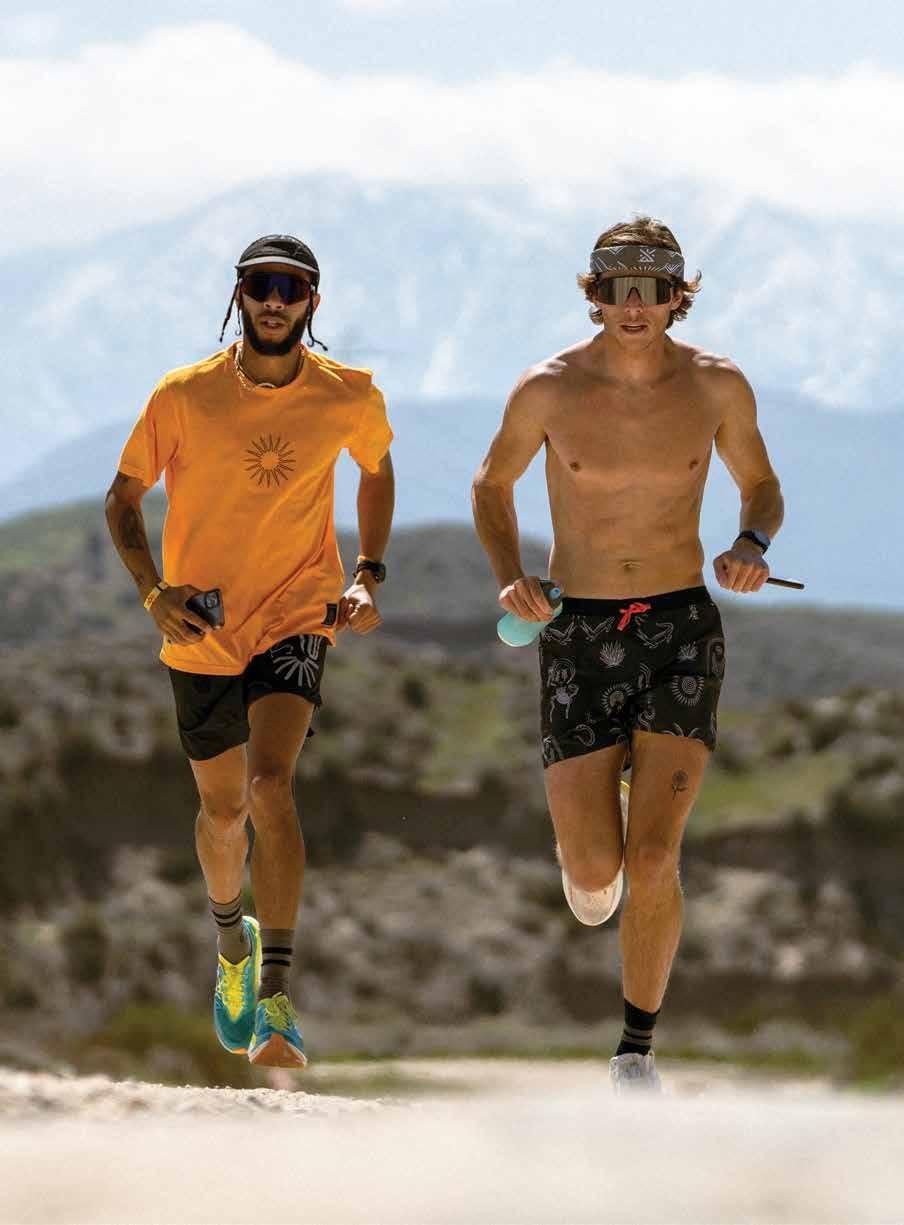


What were the biggest challenges you faced during the race, and how did you overcome them?
Those 34 hours saw humans working to be the best version of themselves. There were moments of exhaustion and frustration, but the moments of beauty and overcoming were the ones that outshine all others. The team tapped into something deeper and more meaningful that can only come from within.
Explain the feeling of reaching the destination of the Welcome to Las Vegas sign.
Overwhelming gratitude. Gratitude for each other, the experience, the capabilities of our bodies, and the intensely deep emotion and connection. It’s hard to explain, but tears were a part of the equation for everyone.
Do you encounter any law enforcement during a race like this? Does its being “unsanctioned” make it more dangerous?
We ran by a few police officers near Cajon Pass. They were incredibly helpful and intrigued as to what we were trying to accomplish. There is an inherent danger whenever you set out to test your mind and body to such an extreme. The thing about this race is that the
roads are all open. Semi trucks flying by at 90 mph and trucks rolling coal in your face in the high desert keeps you on edge, and focused for the entirety of the race. In short, this race is significantly more dangerous than your typical running race. It’s the factors you can’t control.
How did you stay motivated and focused during the race, especially in the long stretches?
That’s the power of a team. When you are feeling down, there’s always someone there to lift you up and inspire you to run a few more miles. We’re a family at this point.
Will you do it again?
We haven’t talked about it, but I have a feeling what the answer will be. TSP is a wildly difficult, transformative and spiritual experience. That’s a tough thing to turn down.
Right: The Speed Project route snakes through Hollywood and the Antelope Valley, past a massive airplane graveyard at the edge of the Mojave Desert, along the edge of Death Valley National Park. and many other touchstones.
LONG RUNS AND GOOD FUN Interested in running long distances or otherwise? There are more than a few options in Santa Monica and on the westside of Los Angeles.
LA Leggers is one of the largest run clubs in the city. Originally the first and only training program for the Los Angeles Marathon, membership grew and grew beyond training and now they’re showing off their legs weekly, with runs starting at Santa Monica High School (601 Pico Blvd) and 1450 Ocean Ave on Wednesdays and Saturdays respectively. laleggers.org
Venice Run Club started in June of 2020 by friends Justin and Tyler, who vowed to run four miles every four hours for a stretch of 48 hours in an attempt to raise money to combat racial injustice. From those noble seeds a massive 400-plus member run club has sprung, and now the team runs together every Tuesday (Santa Monica High School track), Wednesday and Saturday (parking lot at 2150 Dell Ave. in Venice). venicerunclub.co

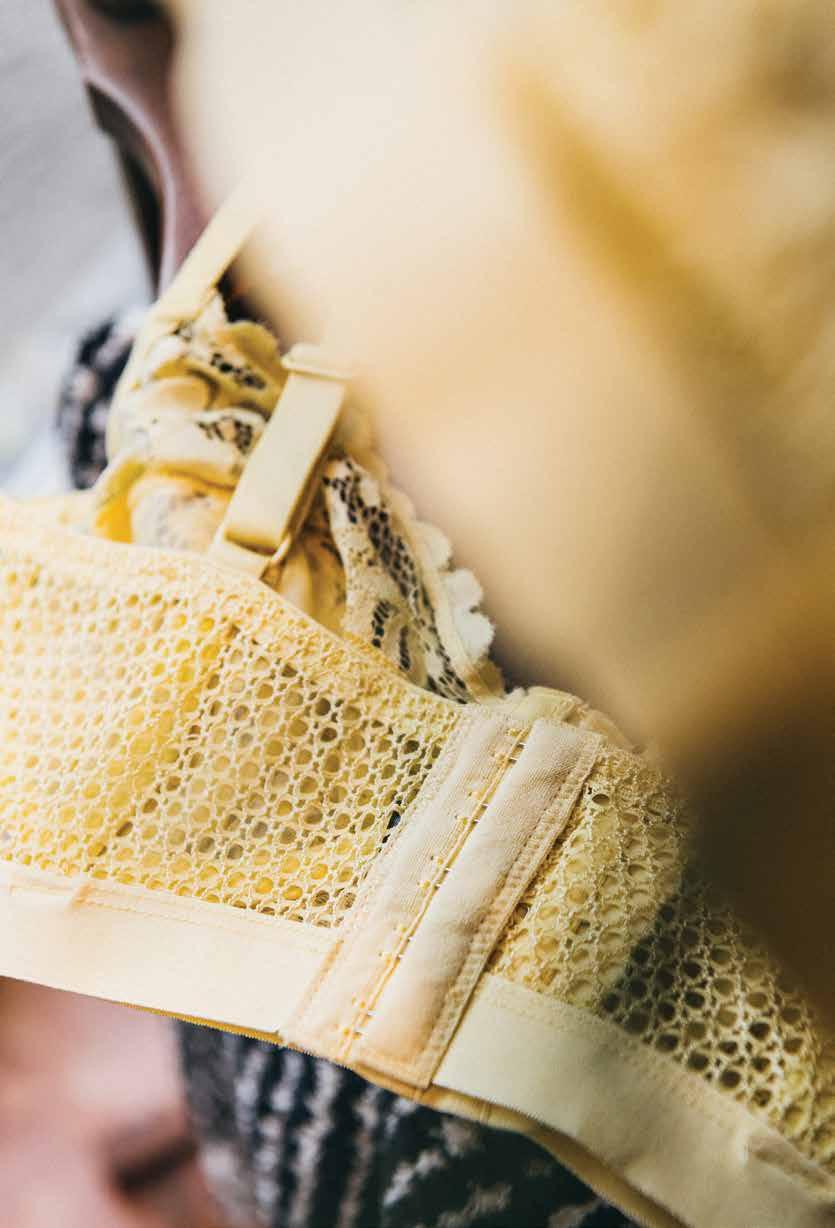
“
The first thing you put on your skin sets the foundation.”
It’s like a hidden power suit, and if you feel good about yourself—empowered—it allows you to feel that way no matter what you wear on top.”
Lingerie has always been a part of Ela Onur’s life. The Los Angeles-born designer spent her formative years in Turkey where, starting in her teens, she pitched in at her family’s textile plant. There, she helped make and design lingerie accessories, crafting clasps, straps, and underwire for companies like Victoria’s Secret and Marks & Spencer.
After a stint at Lehigh College in Pennsylvania, where she studied finance, Onur went back to Istanbul, followed her passion and began to learn more about the technical aspects of designing bras. She studied how to best craft a bra for fit and support, focusing on elastics, fabric choices, and comfort.
Eventually, all that work led to Onur creating her own lingerie line, Else. After a year or so of crafting the capsule collection, she brought her brand to the states, opening a pop-up at Platform in Culver City. Now, Else has two storefronts—one in Santa Monica and one in Los Angeles.
Born out of Onur’s belief that customers were looking for “something else” in the world of undergarments, her line is centered around the idea that lingerie and loungewear should be both comfortable and beautiful. That it can be high tech, lightweight and durable, and made of materials that are also sustainable. Each Else piece comes out of the brand’s Istanbul atelier, where Onur employs local women who ethically and meticulously craft each garment with luxury and sustainability in mind.
The result is airy, ethereal lingerie, aligning perfectly with Onur’s vision of a California consumer. “How we dress in LA is reflected so much in our lingerie,” she says. “Everyone in LA can leave their house, be out all day, and even go on a date in the same outfit and will just be OK. It’s a kind of effortless dressing.” They want something timeless, that “you can take from day to night.”
“The first thing [you] put on your skin sets the foundation,” continues Onur about the
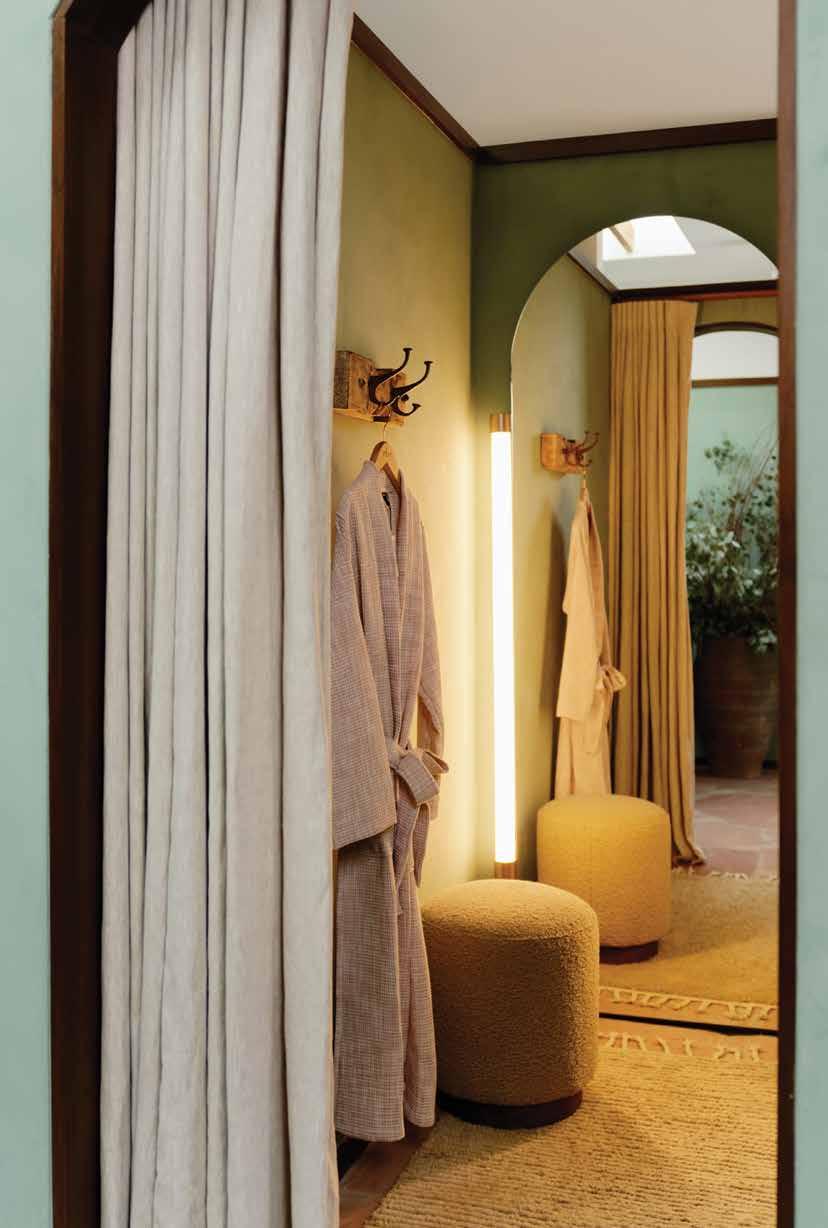
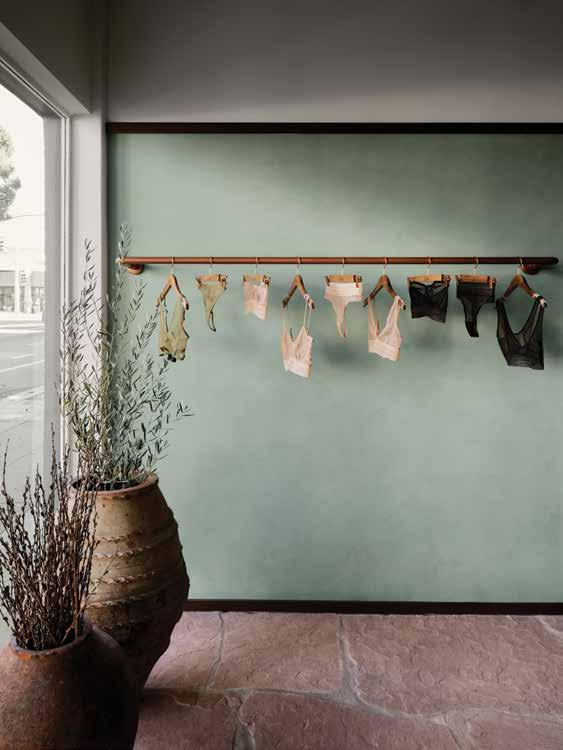

importance of undergarments and lingerie. “It’s like a hidden power suit, and if you feel good about yourself—empowered—it allows you to feel that way no matter what you wear on top. It’s a very personal item that creates a more profound connection than any other garment. “
Located on Montana Ave. in Santa Monica, Else’s west side boutique is fully stocked with all of the brand’s lingerie, loungewear, swimwear, and even some other accessories like Turkish throws and luxe candles. “We really strongly believe in quality retail spaces, and Montana has a neighborhood vibe as well as a really nice sense of community,” says Onur. “Over the past year, a lot of new things are happening there, and we’re getting a more family oriented clientele from the area, like moms and daughters shopping together. We also get a lot of people who are just visiting L.A. and it’s great that they can take home something from our store that feels local, special, and handmade.”
Onur splits her time between Istanbul and Los Angeles, and says much of the inspiration for Else comes from the dichotomy of her own life, or how easy breezy California style mixes with the hustle and bustle of the Turkish capital’s streets. “Istanbul is very chaotic and it’s where Eastern and Western cultures meet together, but spending
time in LA gives me a different vibe and understanding that makes my designs more laid back, tranquil, and serene,” she says. “Also, I’ve become a mom recently, so that has also changed my priorities. Now it’s about the multifunctionality of anything I do, like if I’m going to wear a set of pajamas I also want them to be chic enough to run my errands in.”
Onur says lingerie saw a huge spike in bralette and “soft bra” sales during the early days of COVID, when a trend toward comfort revealed itself. Now, trends have started to move toward more adventurous garments. “I think people are really excited to go back to buying something that is a little bit more special, so they’re more drawn to color and lace,” she explains. Neutrals will always have their place. But, says Onur, people are beginning to “invest in pieces that are going to make them feel really good about themselves, too. They’re more adventurous, so they want a body suit or they want something in a print.”
The truth is, in this day and age, consumers don’t have to sacrifice on quality and comfort. They can have both. The modern woman, says Onur, is “wearing multiple hats, but she appreciates quality and design and wants to invest in a good bra.”
Else is centered around the idea that lingerie and loungewear should be both comfortable and beautiful.
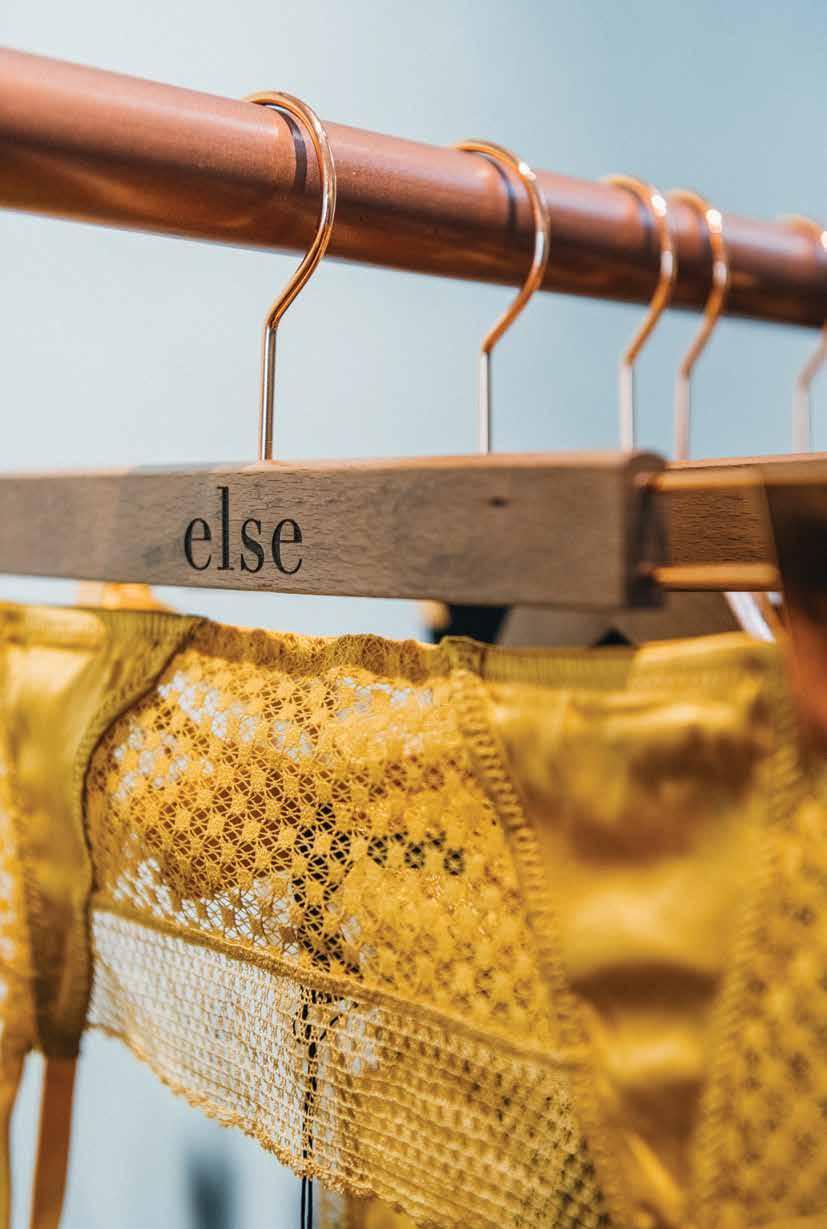
A breathtaking new venue for meetings and events in Santa Monica is set to premiere this year! It is The Conservatory at Hotel Casa del Mar, and WAVES has this exclusive preview.
Perfect for any intimate to medium sized event, this elegant oceanfront enclave is enveloped on three sides with sparkling two-story glass. Natural light illuminates its stylish interior showcasing the natural beauty that surrounds it.
The towering windows will be equipped with electric blackout shades for impactful audiovisual presentations.
Casa’s endless views of the Pacific Coastline also serve as a panoramic reminder that The Conservatory is purposefully aligned with ocean conservation. In fact, throughout its
inaugural year, a portion of the revenue from each event will benefit charities committed to protecting the world’s oceans.
In addition to tailoring any menu to meet your guests’ needs, The Conservatory’s culinary team has developed a very special “conserve” menu, featuring wild seafaring species classified by the conservationists as “under-fished.” This menu will change based on the world’s current invasive species list.
The Conservatory is not only breathtaking, it is perfectly suited for receptions up to 130 people or 96 for seated dinners. It is also ideal for corporate meetings.
At The Conservatory, the possibilities are as endless as the views.
An exclusive preview of The Conservatory at Hotel

Southern California is one of the most popular locations for weddings as the sun is usually guaranteed to shine and the temperature averages a comfortable 72 degrees.
Now picture two iconic luxury hotels sitting side by side on a beach, with coastal charm and world-class service. You would be envisioning Santa Monica’s Shutters on the Beach and Hotel Casa del Mar, two soughtafter destinations for saying “I do!”
The demand for long weekend and destination weddings is on the rise. This means couples are seeking locations that can offer their guests a variety of outdoor activities—dining, spa, and entertainment options—so the bride and groom can focus on relaxing.
“After all the planning and preparation, brides often recall their wedding day as a ‘blur.’ The anticipation coupled with all the heightened emotion, can create a lot of anxiety,”explains Bruce Hochberger, Director of Catering at Shutters and Casa. “Today’s bride wants a chance to celebrate with as little stress as possible.”
To help make dreams come true for the newly engaged, Shutters and Casa created the Platinum Package for worry-free weddings.
“As with any large event, many of our clients are often daunted by all of the moving parts of celebrating a special occasion. Our Platinum Wedding Package makes planning the ultimate wedding a breeze!” Hochberger extols. Reserved for weddings with 50 guests or more, the package includes passed hors d’oeuvres, a customizable threecourse dinner, customized wedding cake, champagne toast, table-side wine service, and five hours of a premium bar. As the proverbial icing on the cake, the bride and groom will also receive a complimentary suite on their wedding night.
In addition, Hochberger and his team’s carefully curated list of preferred local vendors, the best of the best in the area, is provided during the initial planning meeting.
“For many brides and grooms, their wedding is the first day of their life together,” Hochberger adds. “Our goal is to help them find the perfect team who can bring their vision to life as they begin their lives together.”
To help make dreams come true for the newly engaged, Shutters and Casa created the Platinum Package for worry-free weddings.



Mix iconic Shutters on the Beach and its culinary team with a General Manager who was raised by three generations of restaurateurs. The result? An enticing oceanside destination led by Christophe Baraton.
Christophe’s interest in gastronomy was ignited early on. Born in the United States to French parents, his mother was a Washington diplomat. His father, uncle, grandfather and even his in-laws, all French restaurateurs.
Christophe honed his hospitality prowess in France, Canada, and Morocco, before returning to the US to continue to build upon the strong foundation he acquired at Institut Paul Bocuse in Lyon.
“It’s been an exciting time to witness the growth of the Los Angeles food scene these past few years,” Christophe reflects. “Currently, there are four Michelin starred restaurants on the Westside, and several more that, in my opinion, deserve that honor. Santa Monica and its adjacent cities have become an immensely popular fine dining destination.”
Christophe’s list of go-to eateries has expanded considerably since he and his wife, Jessica, became parents. When the Baraton’s
aren’t dining at the family’s favorite Coast Café and Bar, they frequent Playa Provisions, Superba, and Gjusta Bakery.
On their rare date nights Christophe and Jessica indulge in pasta carbonara at Felix, kampachi at Cobi’s, or anything on the spicy side at Night + Market Sahm.
“Another hidden gem, ideal for a seaside date or family outing, is Dudley Market on Venice Beach, we bike there,” Christophe explains. “You never know what you will see. One afternoon we arrived to find they were carving up a 200 pound tuna right at the bar!”
Christophe is looking forward to an exciting year as he and his team plan enhancements to Shutters’ al fresco dining experiences. Outdoor seating will be conducive for sharing small plates and a bottle of wine with friends.
Like the menus he and his chefs create for 1 Pico Restaurant and Coast Café and Bar, Christophe believes that the finest ingredients, prepared well, and served unobtrusively, is key. Pivoting selections based on seasonality, he makes sure he tastes every dish regularly to ensure quality, consistency and guests who return again and again.
“It’s been an exciting time to witness the growth of the Los Angeles food scene these past few years,” says Shutters GM Christophe Baraton.

